Unit X Feedback
After reviewing my video feedback, I organised it into a table highlighting my project's strengths and areas for improvement. This clear structure allowed me to easily identify where I needed to improve and refer to these points throughout the project, ensuring I continuously enhanced my work and practice.
For this project, my main focus is to have a solid direction for my work, ensuring that any exploration doesn't lead me astray. I want to carefully consider how each element of my work and creative process benefits the final result and overall project. I aim to incorporate more visual aspects into my work, such as adding more drawings and sketches, better quality photos of my process and final pieces, and videos to track my progress. Consistently documenting these elements will help me reflect better on my process rather than just focusing on the main parts.
I also need to be precise in how I spend my time and what I choose to explore. I want to push the boundaries of what my project represents without losing my voice or overcrowding my work, which could detract from the details and intricacies. My goal is for my work to tell a cohesive story, not just be a final piece. Therefore, ensuring I document and present my work effectively will illustrate this narrative while being critical in my reflections.
Synthesis And Resolution
This mind map encompasses everything I want to explore and consider throughout this project. I aim to thoroughly investigate each element, giving my work meaning, making it personal to me, and enabling a connection with the public. My work isn't just about creating final pieces, I want this project to be much broader in scope. I want to explore myself as a maker, pushing myself to become more confident and skilled.
For my final outcome, I envision creating an entire experience, not just producing vessels for people to take home. I want my vessels to tell a story, allowing the public to form connections with the art and with me as the maker. I have a vivid idea of what I want my final piece to be, incorporating all elements of my work: the stories of my vessels and their connection with the public, the stories of the public and how my work helps them form connections, and photos of my work in public spaces. I want this project to create a comprehensive narrative, with each step including all the elements that contributed to its creation.
Timetable
I need to create a timetable because I have a lot I want to achieve in this project. Having a set timetable is crucial as it will help me organise and manage my time effectively, ensuring that tasks and activities are completed within set deadlines. Timetables provide me with a clear structure, allowing me to prioritise my work, allocate sufficient time for each task, and avoid last-minute rushes. They also help in balancing various responsibilities. Since I want to involve collaborations, a timetable is essential for coordinating with others and informing them when I'm ready to work together. Without deadlines and a timetable, I risk inconveniencing those who are trying to help me, which is unprofessional.
Getting into the rhythm of using timetables is good practice for my future, as it helps me stay focused, track progress, and achieve goals more efficiently. In previous projects, I struggled to stick to a timetable, which meant my work was not at its full potential. By the end of those projects, I often felt burnt out from trying to catch up on tasks that should have been completed earlier.
Jennifer Lee
Lee creates hand-built pots, developing her unique method of colouring them by mixing metallic oxides into the clay. Her vessels rise with meticulous, taut profiles from very small, often hidden bases. The colours are integrated into the coiled and pinched construction of her pots, frequently lying horizontally. She uses no glaze, so these seams of colour are both the surface and the body, linking the inner and outer surfaces of the pot's walls. Jennifer’s practice evolves with each piece, as every vessel influences the next in a fluid and instinctive state of change.
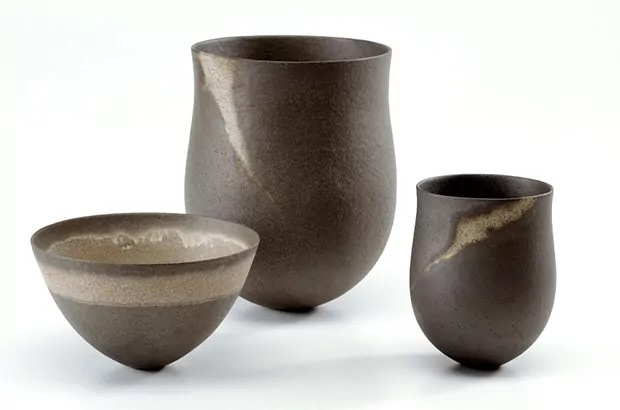
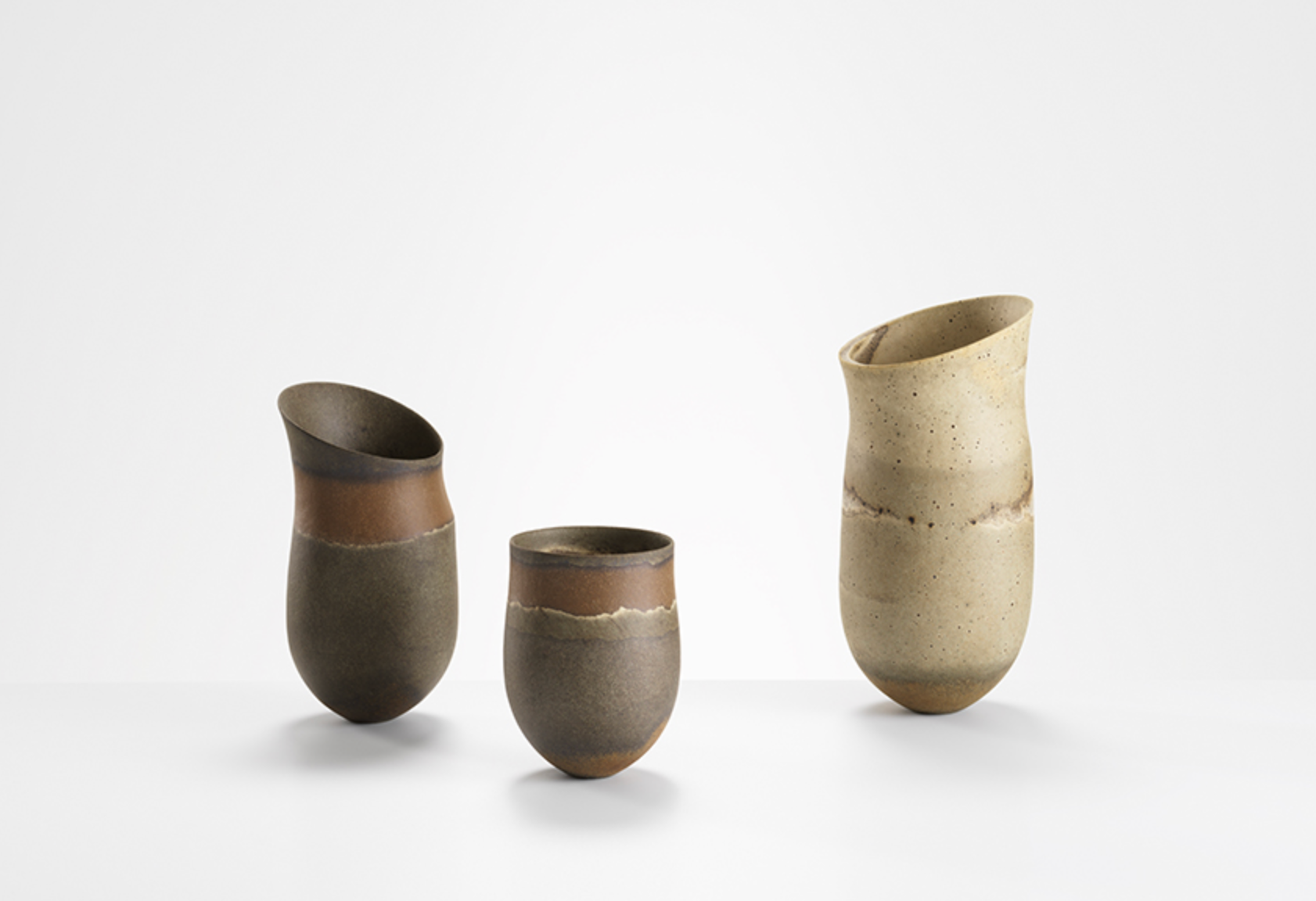
I was initially drawn to Lee's work because of her simple yet striking colour schemes, with bold lines blending seamlessly. It's interesting how I'm attracted to her vessels, which have very organic, open shapes, while mine are a mix of organic forms with more closed, structured tops. This juxtaposition in our work is intriguing, as I'm captivated by the hidden bases and billowing bodies of her vessels, which are almost the opposite of my own creations.
I also admire how her work is presented in collections, with no two vessels being the same yet all linked by colour, shape, or form. Her work is very distinctive to her. I've taken inspiration from Lee by exploring more collective singularity and considering her application of coloured clay in my vessels. Layering clays is something I could incorporate into my own work.
Grayson Perry
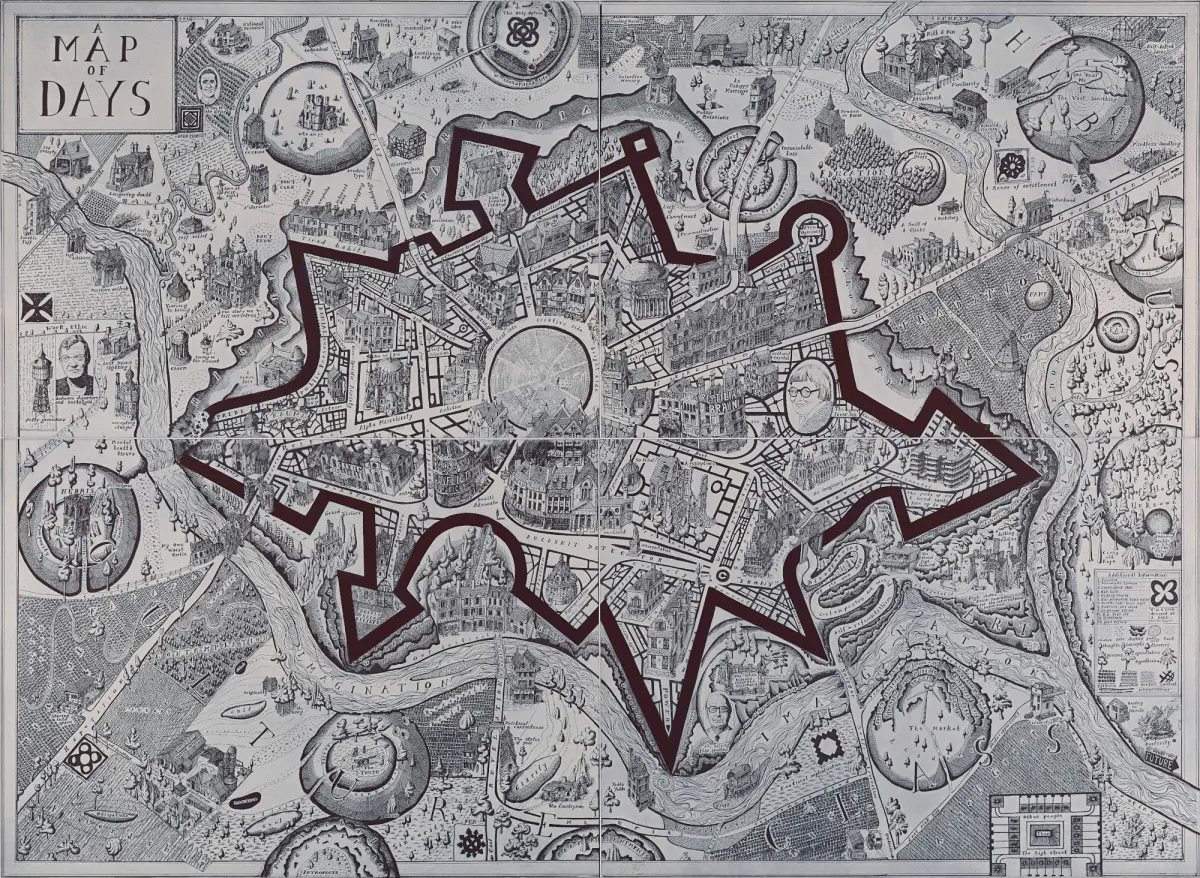
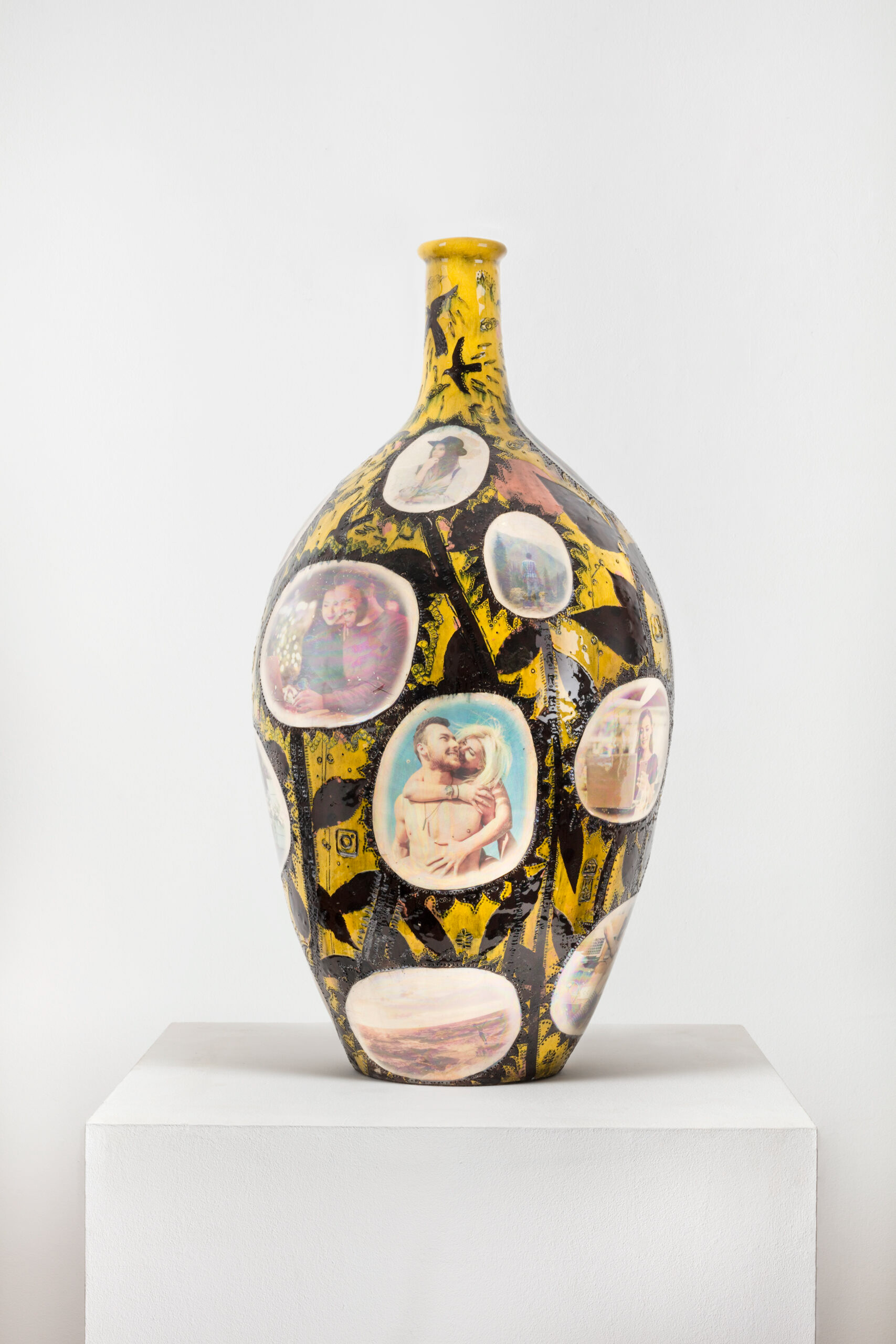

Grayson Perry is a celebrated British artist known for his exploration of contemporary life and identity through his art. His exhibition "Grayson Perry: A Temple for Everyone" delves into themes of home, identity, and belonging. His work "A Map of Days" (2013) and "Our Town" (2022) reflect on how personal and collective identities are shaped by the places we inhabit. Perry's art often incorporates autobiographical elements, encouraging viewers to reflect on how the spaces we live in influence our stories and sense of self. Perry is perhaps best known for his intricately decorated ceramic vases. He uses traditional pottery techniques and embellishes his pieces with rich, often provocative imagery and text. His ceramics explore complex themes such as identity, social issues, and personal experiences.
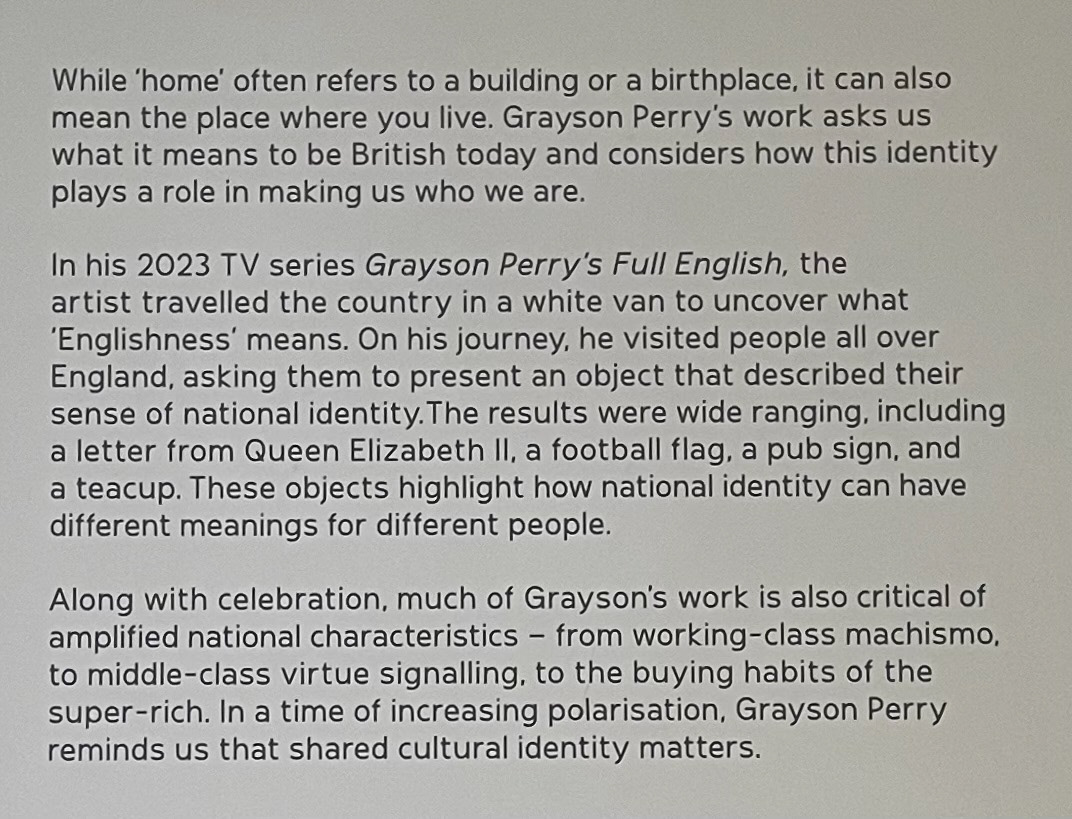

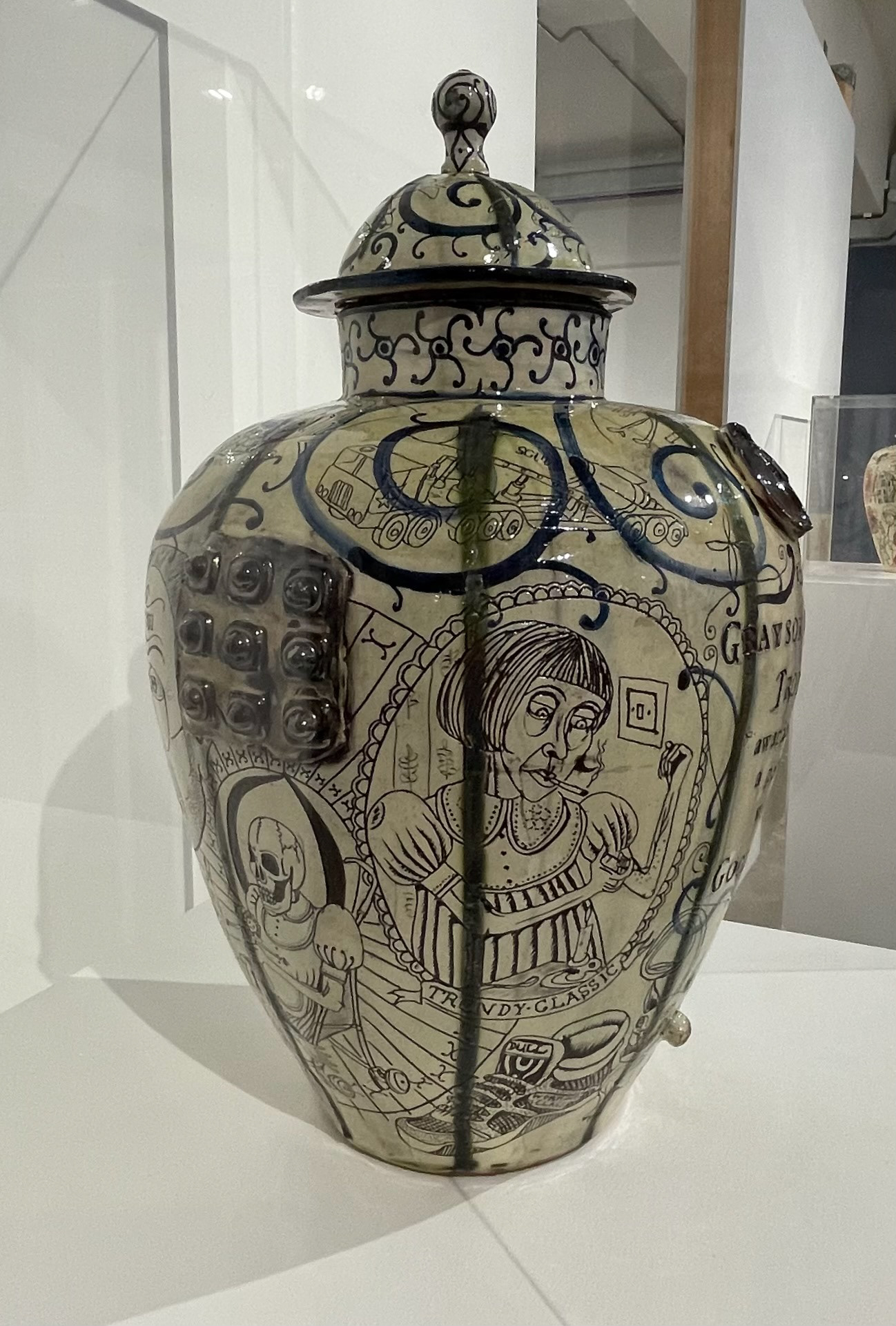

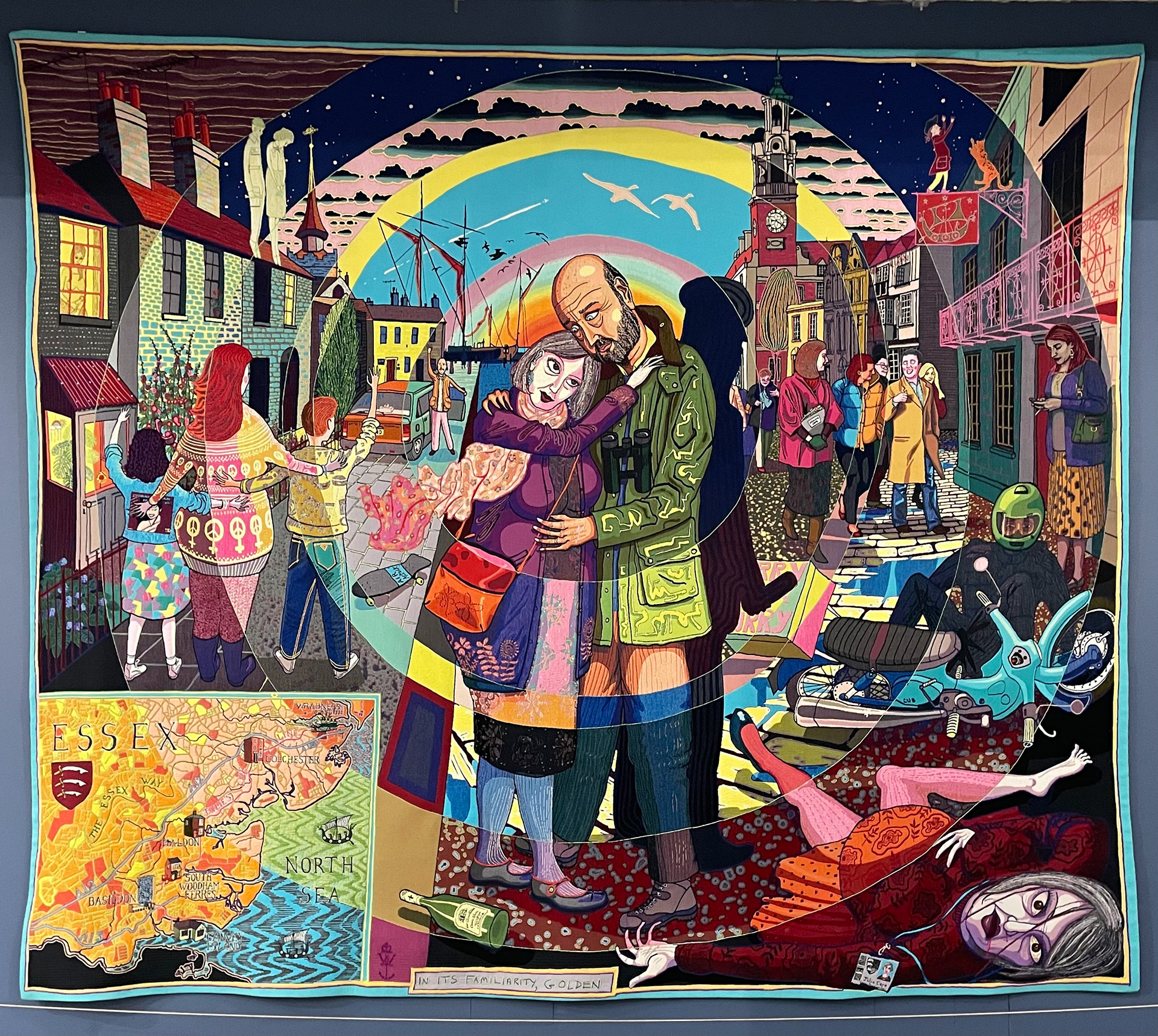
Own Photos From Gallery
After seeing Grayson Perry's work in a recent gallery, I was captivated by his use of bright, bold colours and intricate illustrations that tell a story as you walk around. Some of his pieces reflect his own life and personal journey, while others depict the stories of imaginary characters he created to represent people's experiences and our shared culture. This allows the audience to connect on multiple levels. I admire Perry's work because it encompasses a large collection of mixed media pieces that focus on themes of home, identity, and belonging, which resonate with my own work as I explore the concept of finding a sense of place.
Tutorial Notes- Week Two
Miya Kondo
"Objects of Empathy" is a collection of sculptural forms designed to encourage personal and subjective interpretation. These objects are simple yet ambiguous, inviting users to engage with them and define their own functionality. Kondo's work emphasises the idea that the significant relationships we form with objects are created by our interactions with them rather than by the objects dictating their own use. The pieces in "Objects of Empathy" are designed to be malleable sponges, ready to be shaped by the user's touch and imagination. This approach fosters a personal connection between the user and the object, making each interaction unique and meaningful.
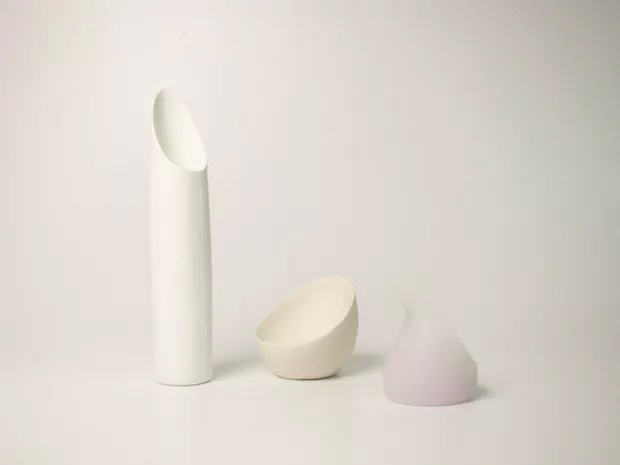

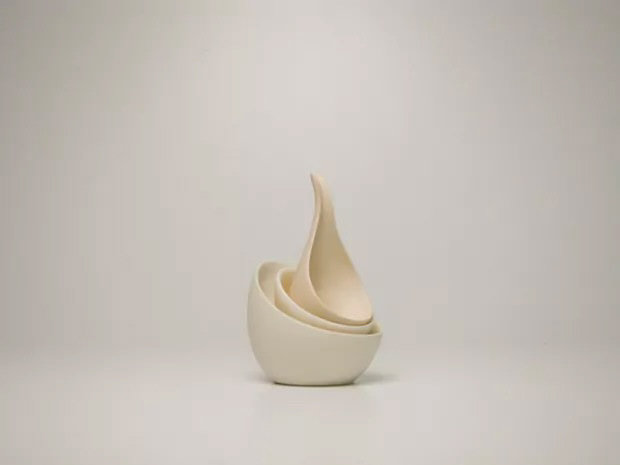
I am truly inspired by this piece of work, particularly the idea of objects being malleable by the audience. Kondo's focus on the relationship between the user and the object resonates with me. In my own work, I want to explore the relationship people have with my pieces, allowing the owner to decide their functionality. I aim to engage the public with my vessels in a similar way, giving objects more meaning beyond just serving a utilitarian purpose.
My objects are meant to provide comfort, functionality, and an opportunity for reflection. This whole idea of creating a bond and story with ceramics is enlightening. By encouraging users to interact with my vessels and define their own use, I hope to foster a deeper connection and personal narrative with each piece. This approach not only enhances the user's experience but also adds a layer of emotional significance to my work.
QR Codes
A QR code is an array of black-and-white squares or pixels set in a grid that stores data for a machine to read. A smartphone or camera can quickly process the information in a QR code's specific arrangement of pixels, making it convenient for storing and accessing data.
I want to create a QR code that I can add to my ceramics to allow people to access my survey about my work, my Instagram and website, and get in contact with me.
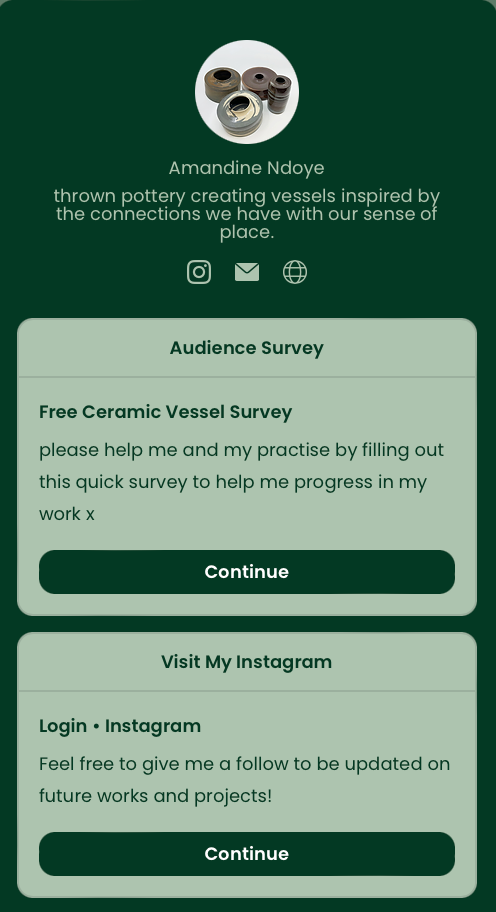
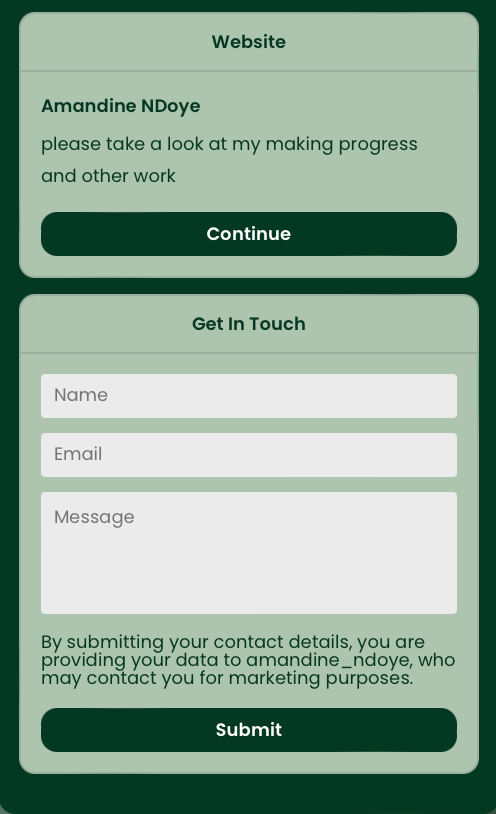
I've chosen Linktree as the best platform for sharing my content because it's user-friendly and doesn't require my audience to create an account. From my Linktree page, you can easily access my questionnaire, Instagram, website, and contact section. As my project progresses, I'll be adding more information here, allowing more people to follow my journey and see the development of my project.
Survey Questions
My project isn't just about sharing my work, it's also about connecting with people in my community. I wanted to incorporate a survey to listen to the stories of those who decided to take my vessels. This way, I can understand whether people are drawn to my vessels or if they take them simply because they are free.
By creating a survey, I can connect with the public more effectively and see if others have had similar experiences to mine in finding a sense of place. Additionally, I can learn more about my work by seeing what people like and don't like, which will help me improve.
At the end of the survey, I've included a section where people can upload photos of their new vessels in their homes. I hope these photos bring happiness to the participants and to me, as it will be incredibly rewarding to see my work loved and shared, bringing comfort to people's homes.
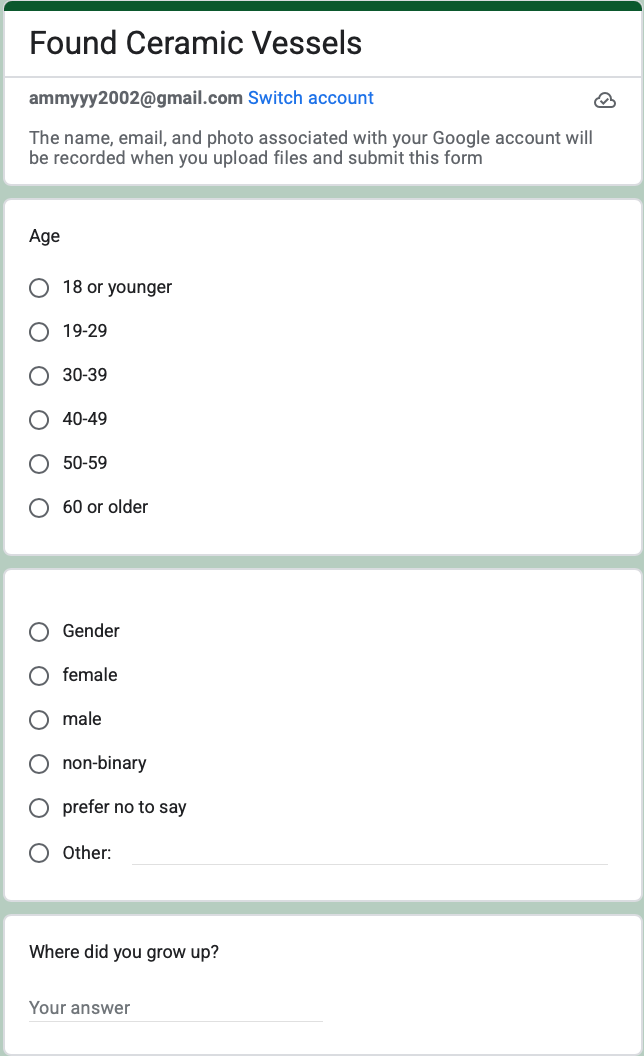
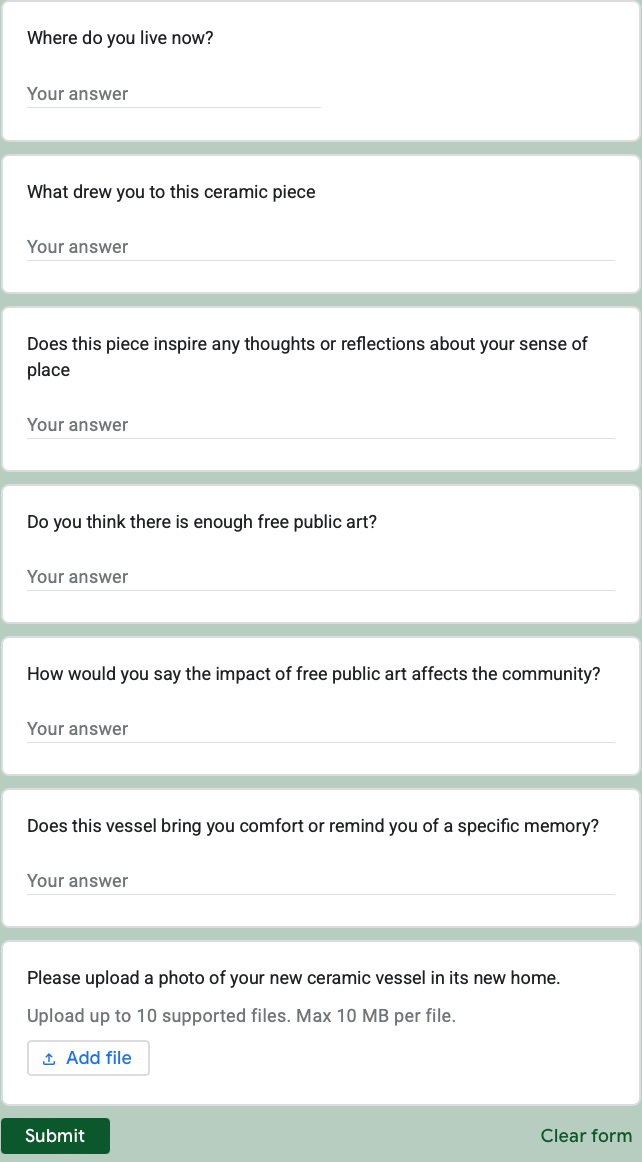
Reflection of Week Two
Throughout this week, I focused on establishing effective communication with my audience. I began by exploring QR codes and determining the best platform to guide and contain my audience. After some research, I found that Wix Hopps was the ideal choice for me. It's a free platform that I can edit throughout my project, providing my audience with access to all the necessary links in one place.
I was particularly interested in integrating this QR code into ceramics and figuring out how to execute this idea. However, some pieces needed to be fired, extending the process to next week. My goal for the initial weeks was to perfect my basic skills and techniques, ensuring I wouldn't have to worry about them at the last minute.
This week was challenging as I received my DC3 results, which demotivated me and made me feel overwhelmed by the workload. To overcome this, I created a clear structure for my work, setting weekly goals and breaking them down into manageable tasks. Completing these mini-tasks each week felt rewarding and kept me motivated.
These were my main reflections for the week. I'm pleased with the progress I made without putting too much pressure on myself. I understand that steady progress each week is crucial to avoid burnout in the final weeks. Ticking off items on my to-do list each time has been key to maintaining this balance.
Tutorial Notes- Week Three
Soph Boobyer
Soph Boobyer is an artist and curator based in Amsterdam. Their practice focuses on the interactions and gestures between bodies in space, advocating for multi-sensory knowledge presentations. Boobyer combines curatorial and craft practices, using talking, listening, writing, making, reusing, altering, disrupting, gathering, inviting, and visiting to explore eco-critical and feminist contexts. I was interested in Boobyer's work as she advocates for multi-sensory presentations of knowledge, which can be mirrored in your ceramics by engaging viewers through touch, sight, and even the cultural stories behind the pieces. Boobyer's practice also involves gathering, inviting, and visiting, which inspires me to create ceramics that foster community interaction and reflect the people and places they originate from.

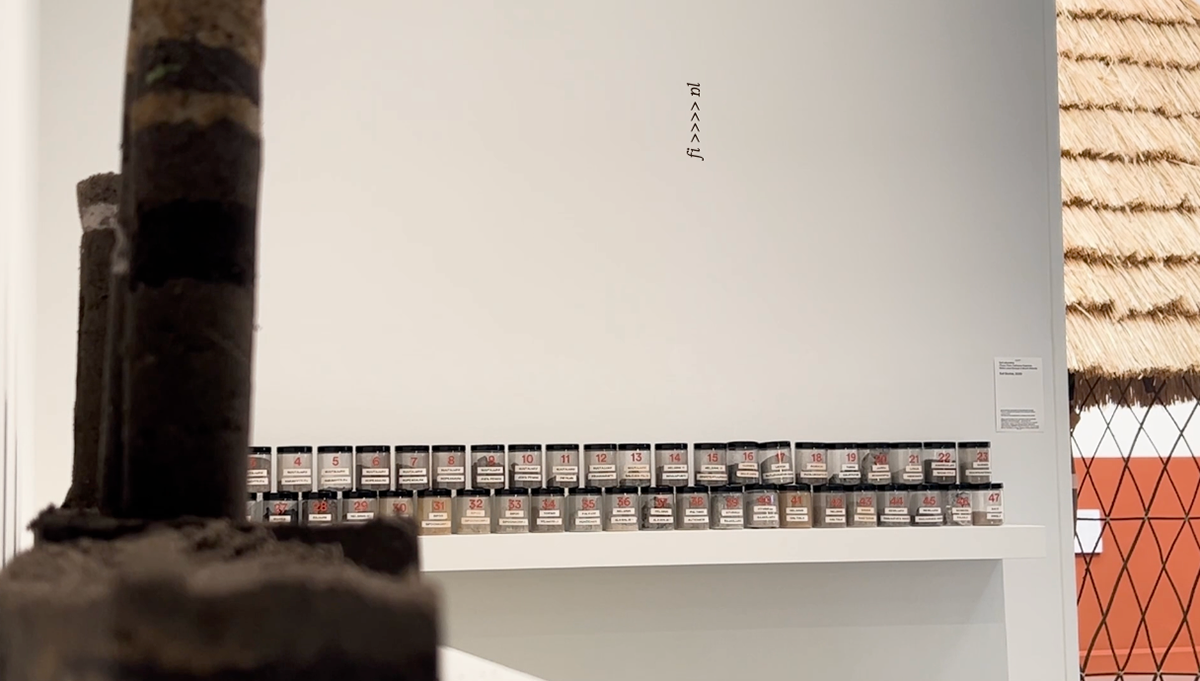
Gabriella Rhodes
Gabriella Rhodes is an artist and craftsperson based on the Llŷn Peninsula in North Wales. Her practice is deeply rooted in the environment, focusing on the use of local and abundant materials, particularly clay-rich soils. She refers to her work as "land-based," emphasising the connection between artistic research, materiality, and the environment.
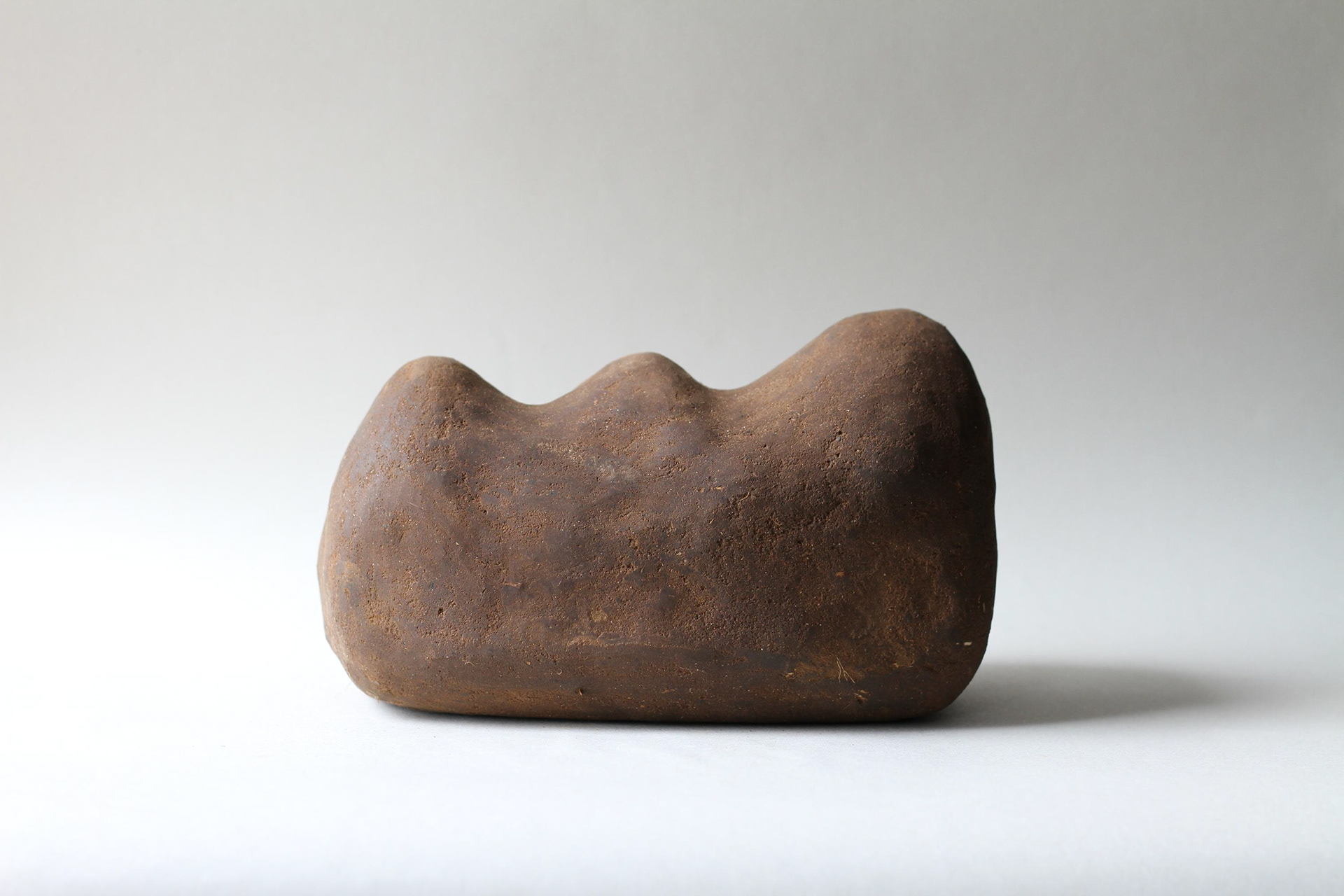


Both Soph Boobyer and Gabriella Rhodes are graduates from MMU Crafts, and their post-university journeys have greatly inspired me. Boobyer has participated in numerous residencies, taking her skills and craftsmanship across Europe. This idea of travelling while continuing my practice is very appealing to me. I am keen to explore how my dual nationality can help me find new places to travel and undertake residencies outside the UK.
Gabriella Rhodes has also caught my interest, particularly her work facilitating clay-based workshops for children and adults with various arts organisations, including The Good Life Society, British Ceramics Biennial, Manchester Craft and Design Centre, and Plas Glyn y Weddw. She has received grants and residencies from institutions such as Guldagergaard Ceramic Research Centre in Denmark and A-B Projects in Los Angeles. In 2023, she received funding from the Arts Council of Wales to attend the Natural Building Festival in Estonia, where she developed her technical understanding of working with clay plasters and natural finishes and participated in discussions on ecological construction practices and circular economies.
Looking into Rhodes' graduate journey, I see potential opportunities for similar funding and residencies to advance my practice. Working with local communities is something I am passionate about, as it would allow me to build and facilitate art in my city.
Portable Objects
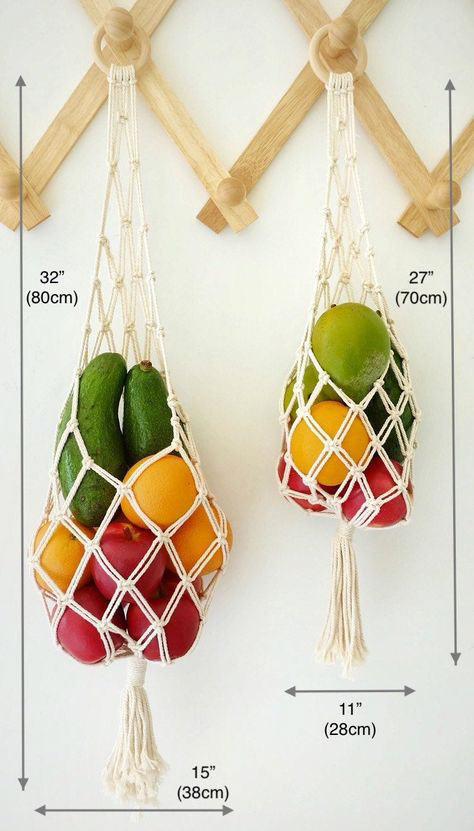
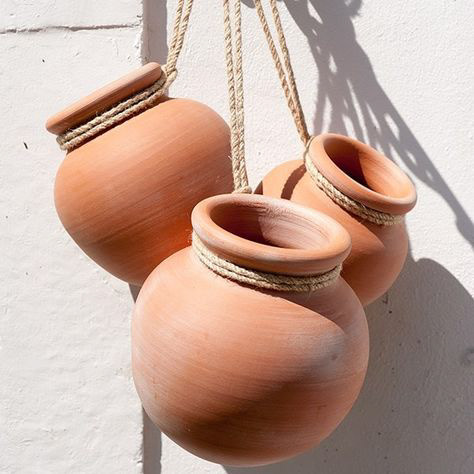
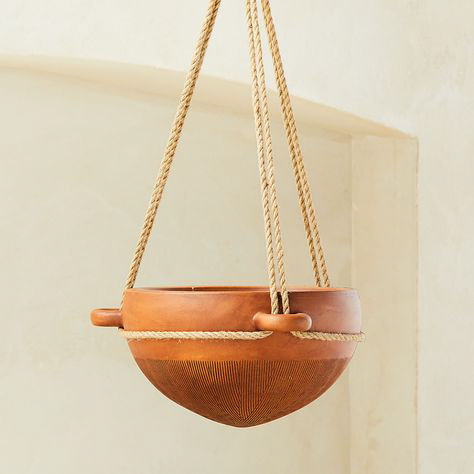

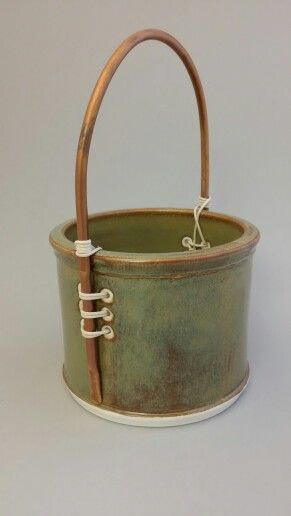

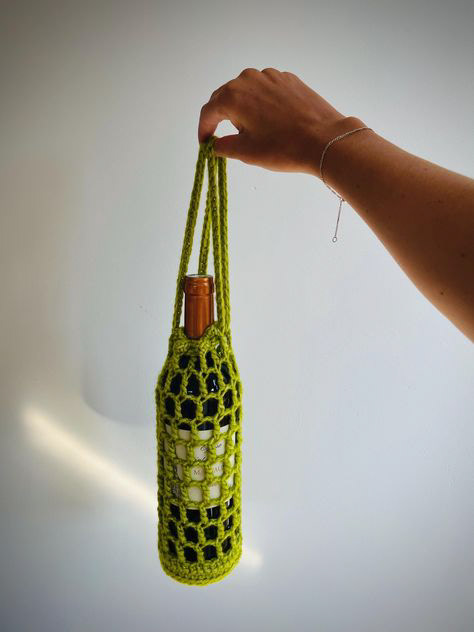

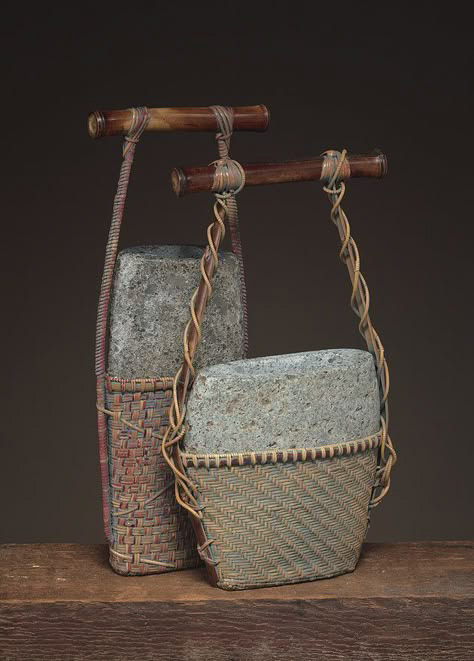
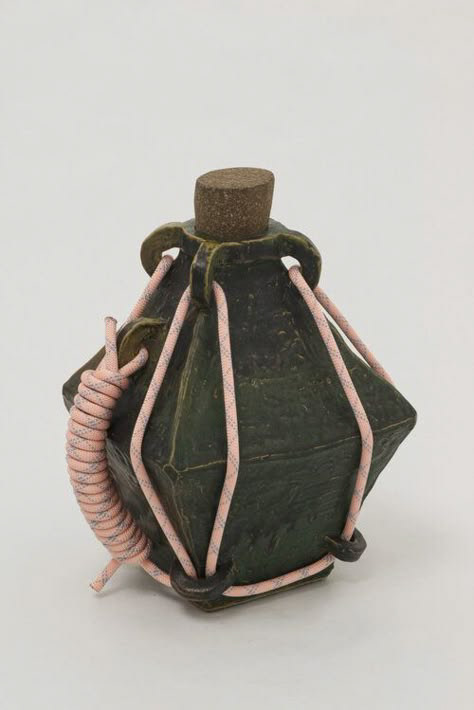


To enhance my vessels' portability for myself and my audience, I aim to create portable designs that increase convenience and aesthetic appeal. By making these vessels easy to take home, I hope to boost their attractiveness and usability. This portability will also allow me to display my vessels in various locations, not just on public surfaces, but also by hanging them at eye level. This approach will make them more captivating to my audience, potentially sparking greater interest and encouraging more people to take them home.
For the carriers, I want to maintain a minimalist design that doesn't detract from the vessels or their intricate details. Using thin string might be the best approach, but further experimentation is needed to perfect this concept.
Laura Fischer
Laura Fischer incorporates textures in her work by exploring the interplay between materials and textures, often using fibre-based techniques. She creates unique and tactile pieces through a systematic process that balances discipline and intuition. Her recent series involves forms foraged from nature, utilising ancient textile techniques like knotting to explore themes such as persistent patterns, cycles, and inherited behaviours
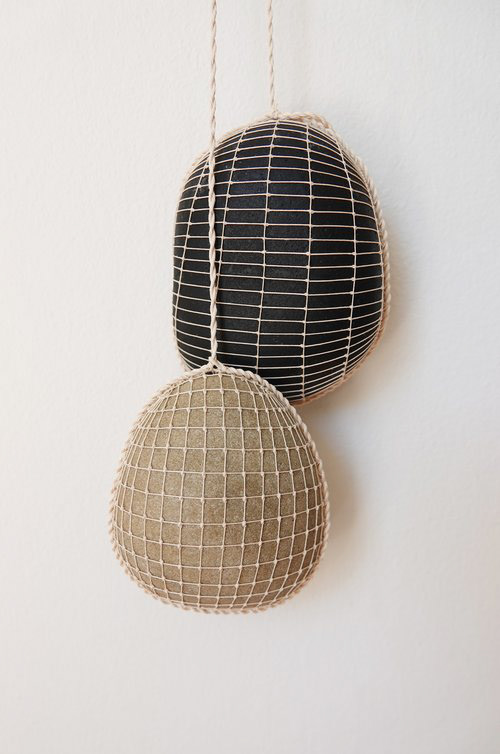
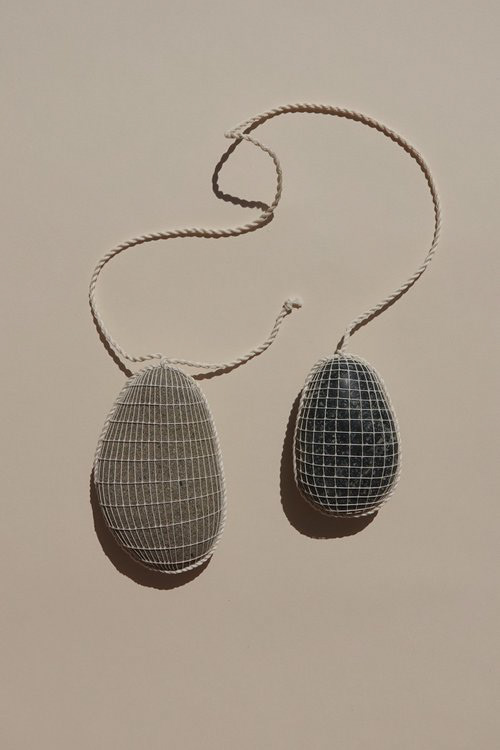

I am deeply inspired by Laura Fischer's knotting designs. The simplicity of her work enhances rather than detracts from her pieces, securely holding and protecting the stones inside. This concept of creating a holder for my vessels not only adds convenience but also provides a sense of comfort and stability. It aligns with my ideas of a sense of place where family and community offer support and comfort.
By incorporating this approach, I hope to create vessels that are not only portable but also evoke a feeling of being hugged and protected. This added layer of meaning will make my vessels more appealing and relatable to my audience.
Reflection of Week Three
This week, I began exploring the application of QR codes and colours, creating numerous samples and experiments to determine the best techniques for my vessels. I took my colour referencing from my memories of my sense of place and began experimenting with these. Overall, I am pleased with the progress I made in selecting and testing colours. The samples I created this week will serve as a valuable reference. I am excited to see how these colours will look once fired and finished. Moving forward, I will continue to refine my colour choices and explore new combinations to enhance the visual impact of my vessels.
Reflecting on my past project, I realised the importance of making smaller vessels and why downsizing worked best for this project. I spent a significant amount of time in the workshop, striking a good balance between making and writing in my work.
I have found that maintaining a good routine throughout the week helps me stay focused on tasks and prevents me from falling behind. Keeping a to-do list and ticking off tasks allows me to allocate my time wisely. I am pleased with my overall progress and the samples I was able to explore. However, I now have to wait for these samples to come out of the kiln, ready for further development next week.
Additionally, this week, I visited exhibition spaces with Lil. It was very exciting to finally start creating something we have been planning for a while. However, I am mindful that this comes second to my main project, and I am still trying to find a good balance with all the things I have going on. It's easy to get carried away with excitement and put all my effort into one thing, but I need to remember that neglecting other tasks could disrupt the structure and routine I have worked so hard to establish.
Tutorial Notes- Week Four
Colour Recipes
I experimented with different hues and combinations to see which ones best complemented the overall design and concept of my project. Through this process, I discovered that certain colours not only enhanced the aesthetic appeal but also conveyed specific emotions and themes that aligned with my artistic vision.
Reflecting on my past projects, I realised the importance of colour in creating a cohesive and impactful piece. For this project, I aimed to use colours that would evoke my sense of place, portraying my journey from home to home and giving comfort and excitement. I found that using a wide colour hue palette helped to create a collective while also allowing the intricate details of the vessels to stand out.
I also need to consider the practical aspects of my colour choices, such as how they would interact with the materials and techniques I am using. Some colours worked better with certain firing processes, which I need to think about when mixing different colours in one vessel. This experimentation phase was crucial in understanding the limitations and possibilities of my chosen colours.
Narrative Of My Work
My journey from Brighton to Manchester is the focus of my project, creating a large collection of individual vessels that showcase the transition, experiences, and the search for a sense of place along the way. The vessels inspired by Brighton feature vibrant blues and greens that capture the essence of the sea and natural surroundings.
In contrast, the vessels inspired by Manchester use industrial colours like greys and reds. The clean lines of the rims, bases, and tops mirror the city's architectural heritage and bold character. This blend with the organic vessel bodies captures the mix of structured and natural elements.
In my collection, I wanted to reflect on my journey, both physically and personally. These transitional vessels blend my two homes together. The coloured clay from Brighton gradually mutes, mixing with greys and greens, reflecting my journey north. As I approach Manchester, more reds are infused, representing my arrival and symbolising the merging of two distinct environments and leaving my old sense of place behind.
Each vessel tells a story of this journey, capturing moments of change and adaptation. The physical movement from one city to another is mirrored in the journey my vessels take from my workshop to their new homes. By connecting with my audience, I hope they can reflect within my work, allowing them to connect with the journeys they have made and their new discoveries of a sense of place and home.


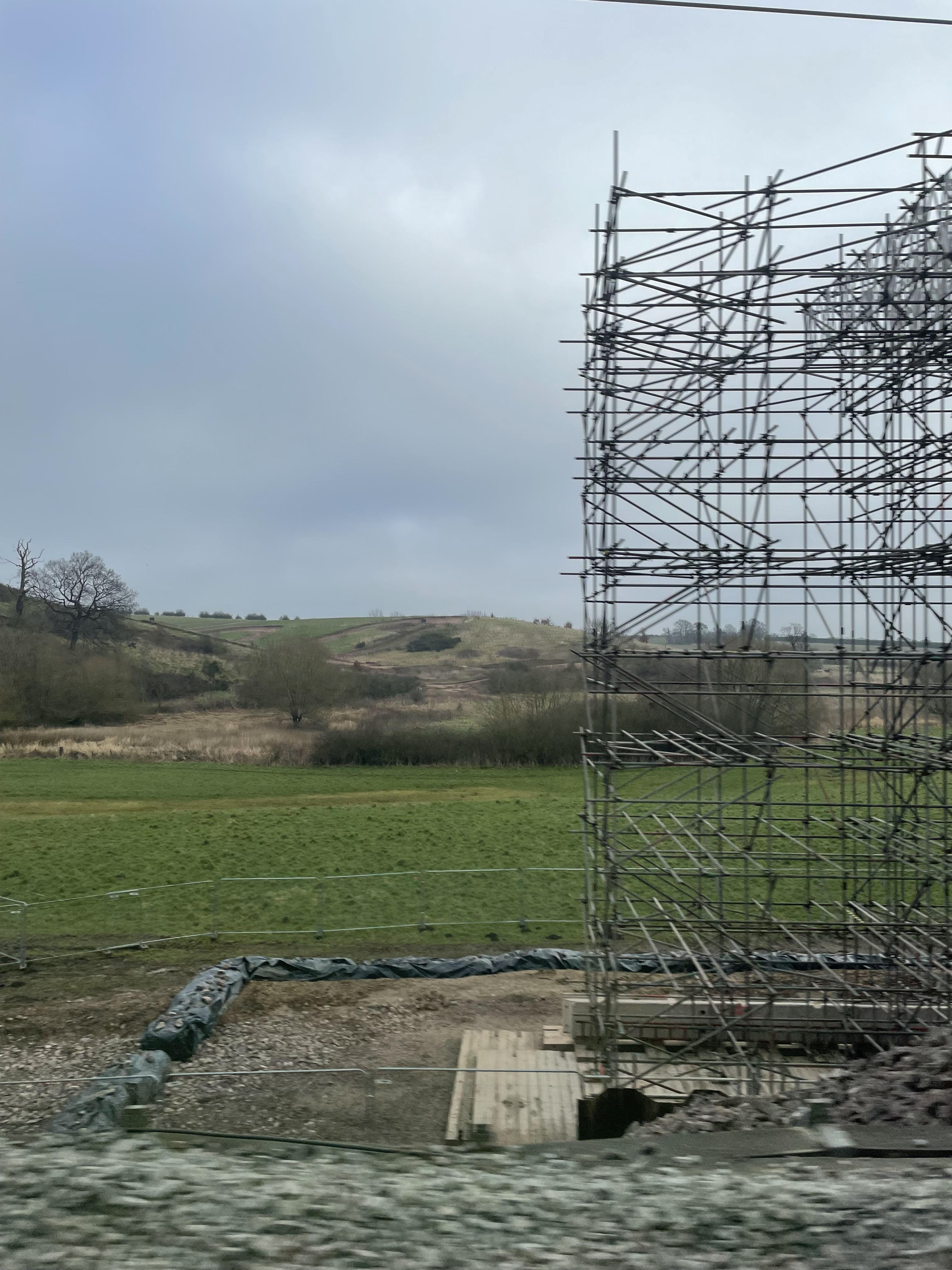
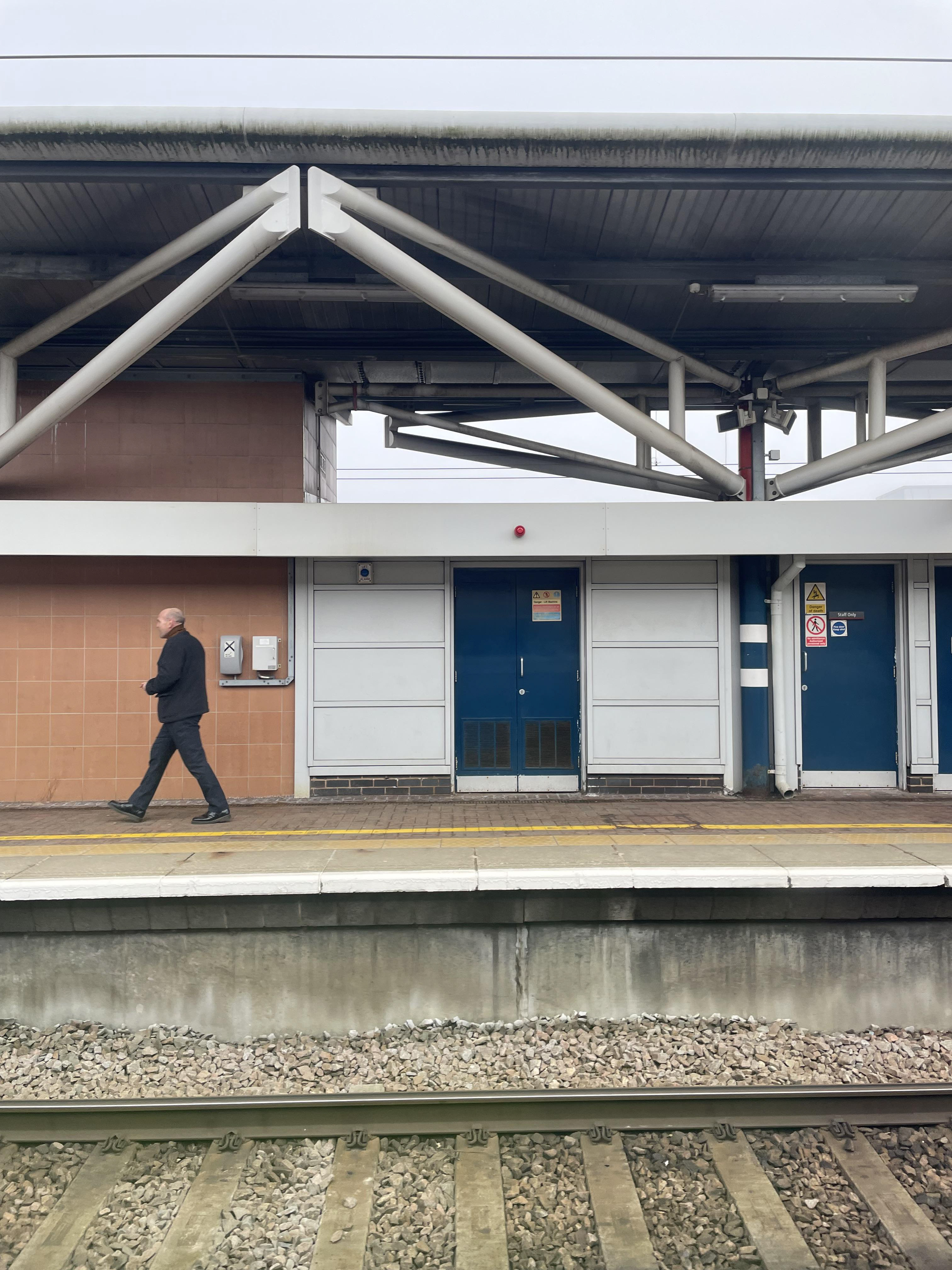
Reflection of Week Four
This week, I focused primarily on updating and working on my portfolio. At the beginning of the week, I wasn't feeling well, which limited my ability to make as much progress on my vessels as I had hoped. My initial plan was to start developing my vessels with coloured clay, examining samples that reflected my sizing, colour combinations, and QR coding. However, the previous samples I worked on were still in the kiln, likely due to the kiln not being full enough to fire, which delayed the process.
Rather than making new pieces just for the sake of it, I decided to wait for my samples to come out of the kiln so I could make informed decisions on how to proceed. This led me to concentrate on updating my portfolio instead. Although this wasn't my original plan for the week, I wasn't too stressed about it. Updating my portfolio allowed me to stay fully up-to-date, which I would have had to do eventually. It also allowed me to reflect on what I want my vessels to portray and how I will achieve this.
During this time, I was able to laser a new, smaller QR code that fits better on my vessels. I also made a rib for my vessels, as I was thinking about the overall finish and how to achieve a high professional standard that I can be proud of. Although I had planned to do this later, doing it this week was beneficial. Now, I feel more prepared to make my pieces and confident that I have thought through each step of my process to make it better.
Tutorial Notes- Week 5
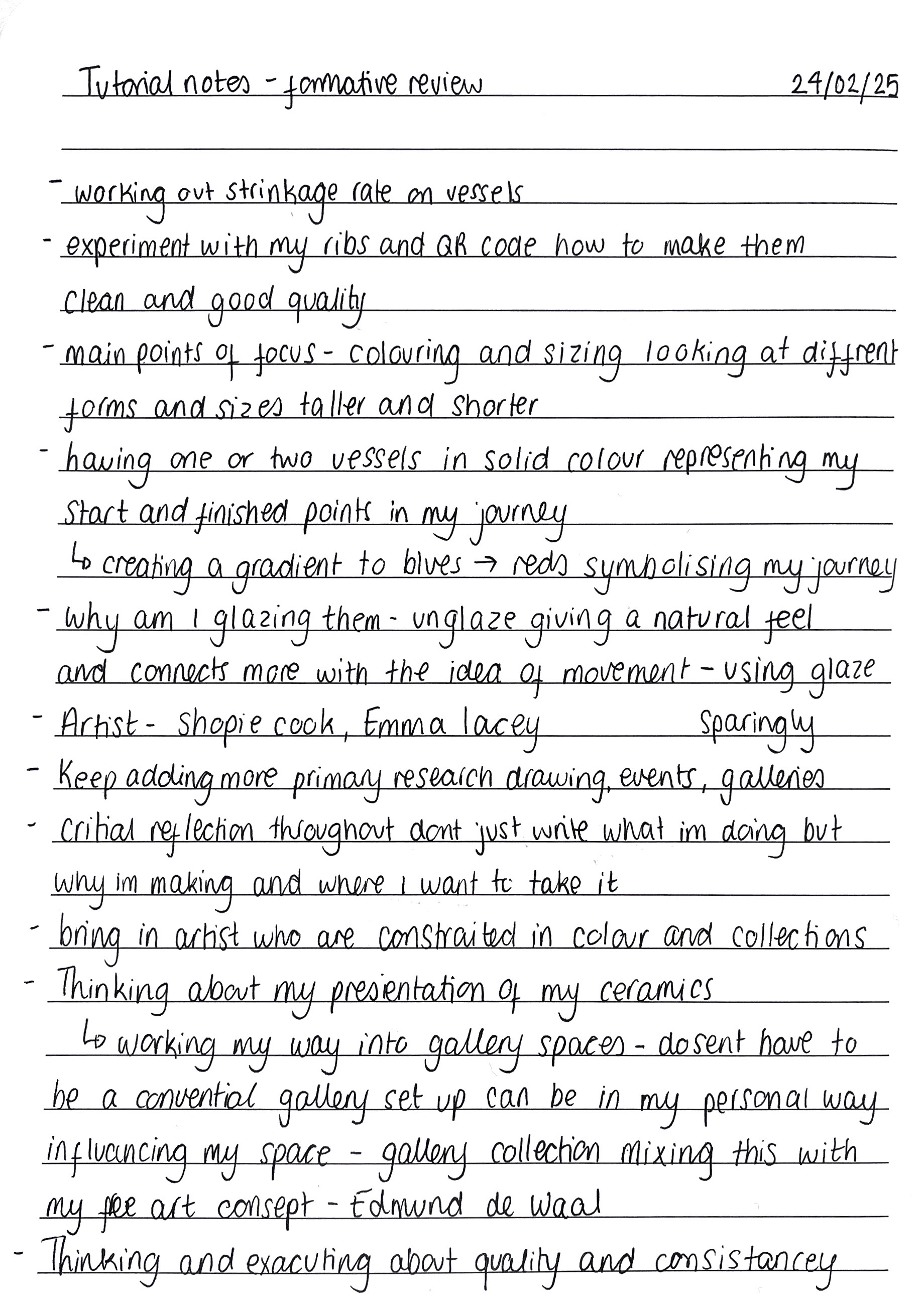
For my formative review, I marked my work where I think it deserves to go. I think it was hard to decide where to place some marks, as I hadn't started or only just covered them, as it's something that develops later on in the project. I feel like my work is progressing well, but some areas need more attention, like my material testing. I was very thorough with my material testing, however, I feel like I could develop some pieces and reflect better on why I made some choices and left other ideas behind. For my research, I think overall it's good, but some further research will help me activate what I want within my work. I think I have reflected well throughout my work, therefore, I gave it a lower mark as the main reflection will be within my final process. Overall, I'm happy with the progress I've made. I think there is a lot of room for me to develop, but this comes with time.
To do this week: Get and make plans for the samples from the kiln to determine the best techniques and colours for my vessels.
Begin developing my vessels with the chosen coloured clay, incorporating the new QR codes and ensuring the sizing and colour combinations are effective.
Continue refining my portfolio with any new developments and reflections from this week's work.
Maintain a balanced routine to ensure steady progress in both making and documenting my work.
Gather more ideas and inspiration for the exhibition
Emma Lacey
Emma Lacey is a ceramic artist known for her tactile and functional tableware. Her work features a combination of satin matte and glossy glazes, enhancing both the aesthetic and practical qualities of her ceramics. Lacey's collections often include a range of colours, from soft pastels to vibrant shades, and she is particularly noted for her "Blue Scale" collection, which explores tonal gradients. Her ceramics invite users to engage with them through touch, making everyday objects both beautiful and functional
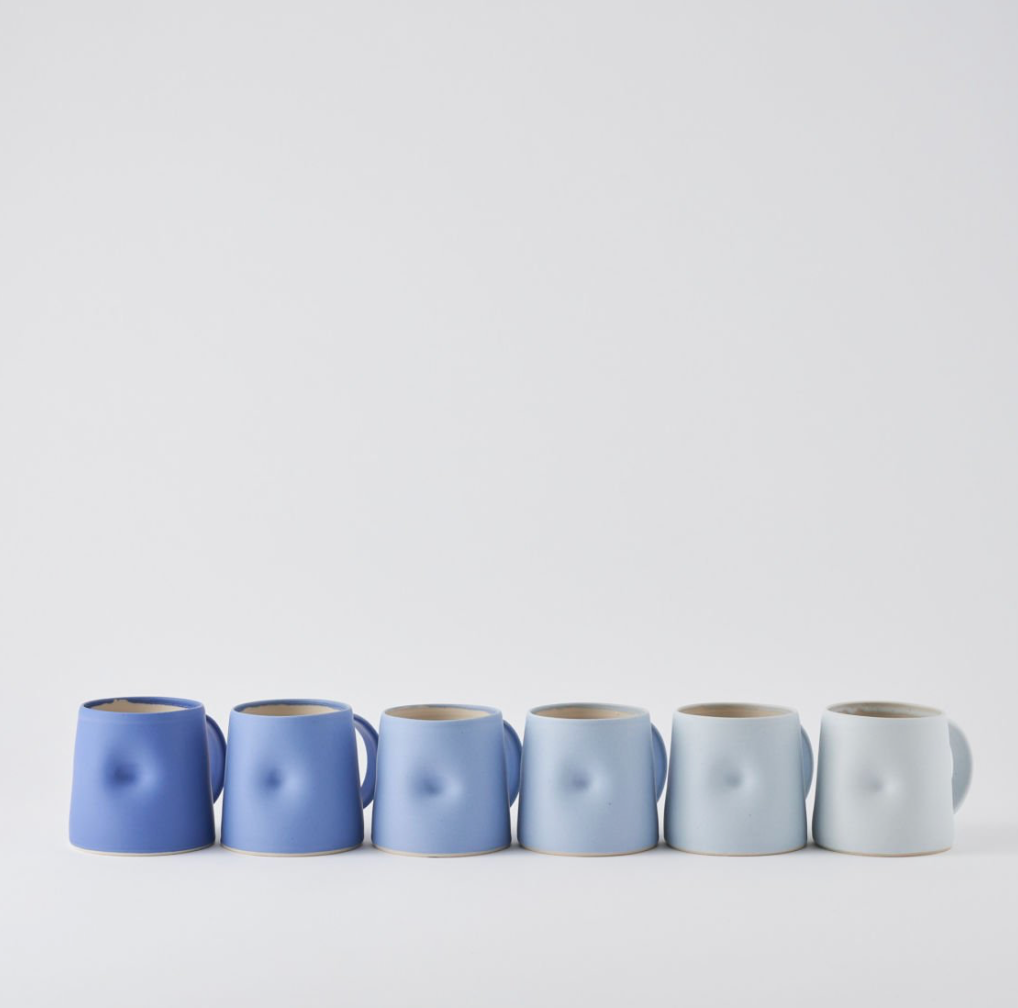

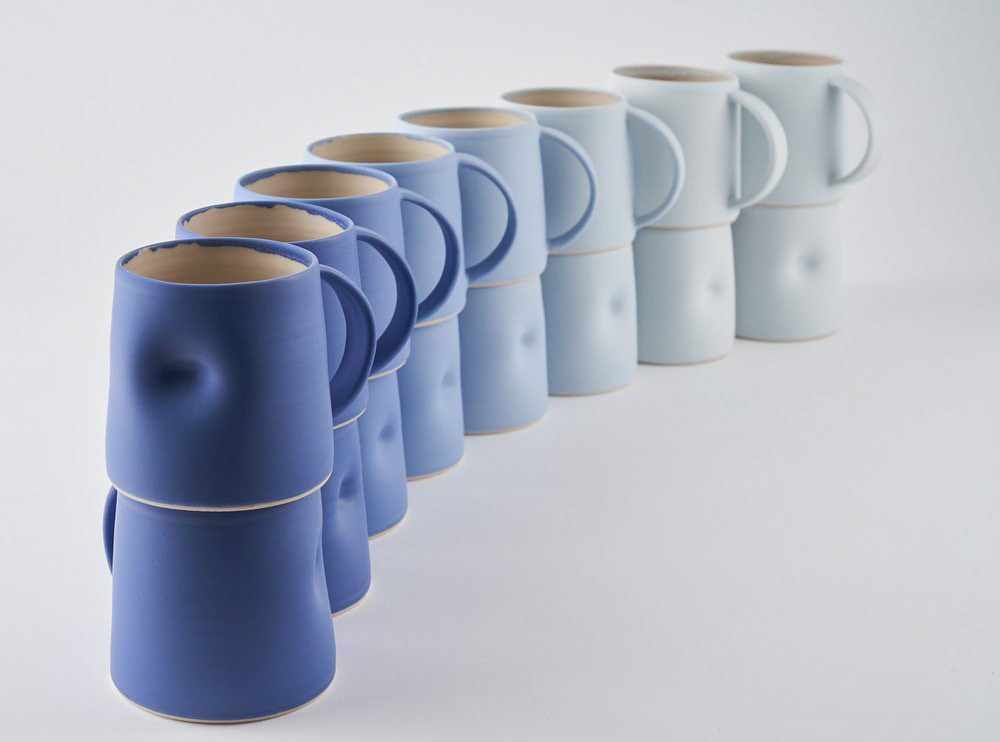
Emma Lacey's gradient ceramics, particularly her "Blue Scale" collection, showcase a beautiful tonal gradient created by varying the amount of cobalt oxide in the glaze. Starting with a deep blue at 1% inclusion, the gradient transitions to lighter shades with micro percentages of the oxide. This technique highlights the subtle colour changes and demonstrates Lacey's skill in glaze application. The result is a stunning collection of pieces that are both visually striking and unique. Her thoughtful approach to colour, especially in collections like the "Blue Scale," inspires me to experiment with gradients and tonal variations in my work. By studying her techniques and designs, I can learn how to balance form and function, making my ceramics both aesthetic and functional
Sophie Cook
Sophie Cook's use of colour and her mix of matte and shiny glazes are integral to the unique appeal of her ceramic collections. She carefully develops her glazes to complement the forms of her vessels, which include bottles, pods, and teardrops. Her colour palette ranges from bright, vibrant tones to subtle neutrals and rich earth hues
Cook's glazes can be both matte and glossy, adding depth and variation to her pieces. The matte glazes provide a soft, understated finish that highlights the natural beauty of the porcelain, while the glossy glazes offer a striking, reflective surface that enhances the vibrancy of the colours. This combination allows her to create dynamic collections where each piece can stand alone or be part of a cohesive group.
The interplay between matte and shiny finishes in her work often evokes the natural landscape of the Suffolk coast, where she is based. This thoughtful use of colour and texture not only enhances the visual appeal of her ceramics but also adds a tactile quality that invites viewers to engage with the pieces on a deeper level
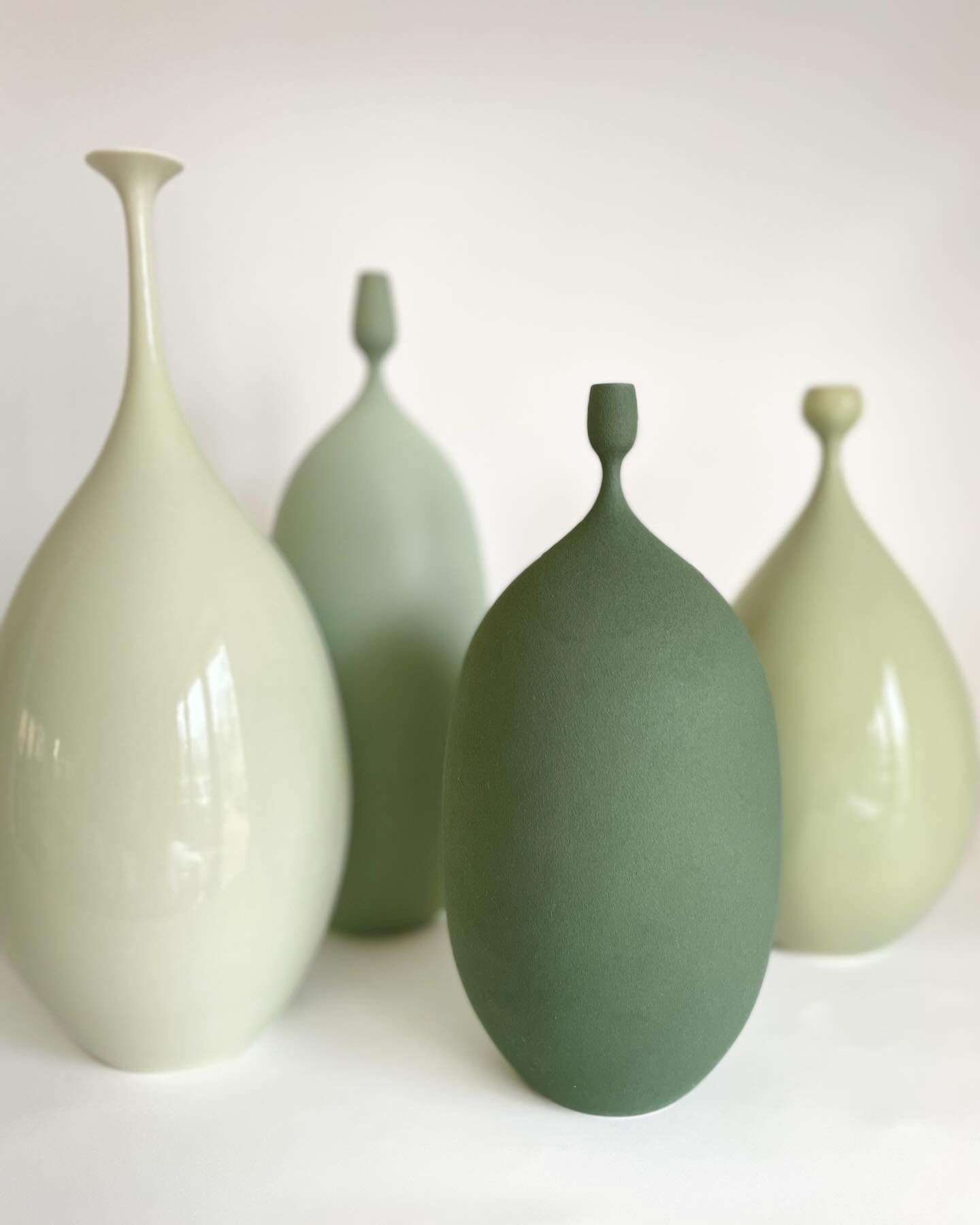

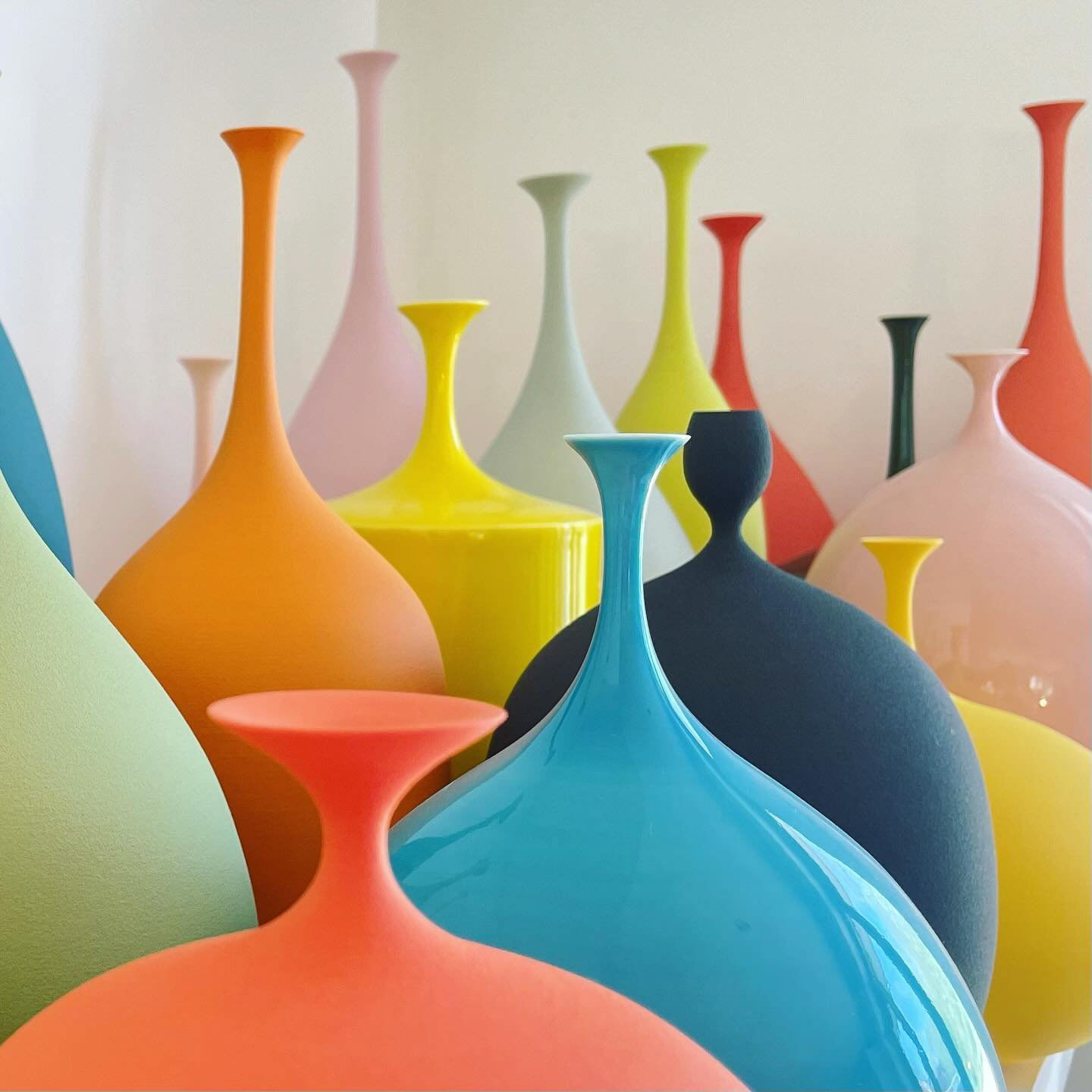
Looking into Sophie Cook allowed me to think about how experimentation with glazes and finishes can elevate the overall impact of ceramic pieces. I want to take this into my work by exploring the balance between natural and glazed surfaces, experimenting with half-glazing techniques, and playing with a variety of textures.
Sophie Cook's attention to detail extends to the rims of her ceramic vessels, often finely finished, with smooth, clean edges that complement the forms
. This precision in the finishing process ensures that the rims are not only visually appealing but also comfortable to handle, adding to the tactile quality of her work.
The rims also play a role in the glazing process. By ensuring that the rims are well-defined and smooth, Cook can achieve a consistent and even application of her glazes.
. This attention to detail helps to create a harmonious balance between the different elements of her ceramics, making each piece a cohesive and refined work of art.
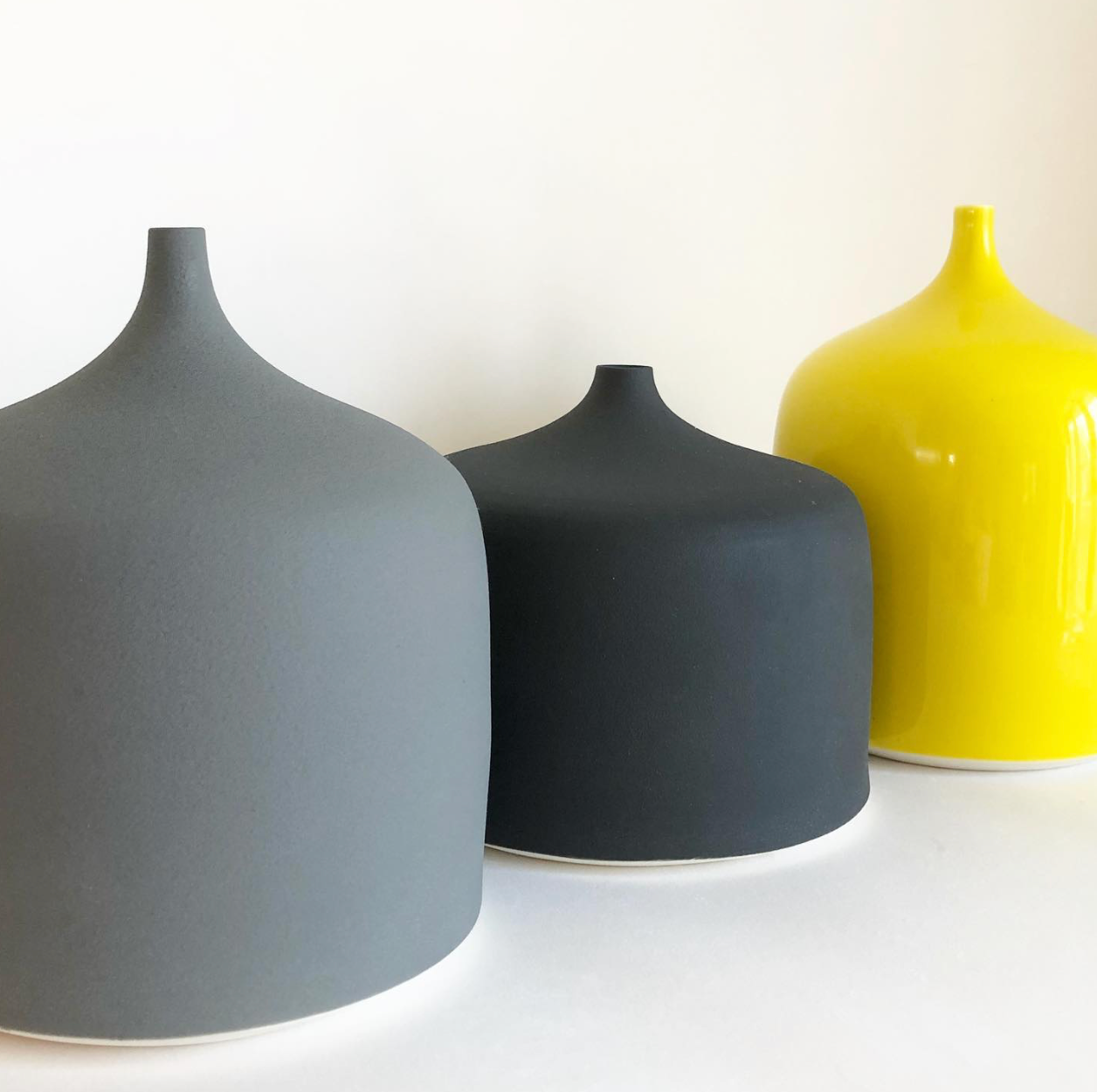
London Trip- Collect and V&A
Visiting Collect London Fair was a super fun and important visit, allowing the opportunity for exposure, networking, and inspiration. Collect showcases the work of over 400 living artists from around the globe, offering a platform to present innovative and boundary-pushing creations. The fair's diverse lineup of galleries and artists inspired me, helping to focus my work on seeing the techniques, displays and market for ceramics.



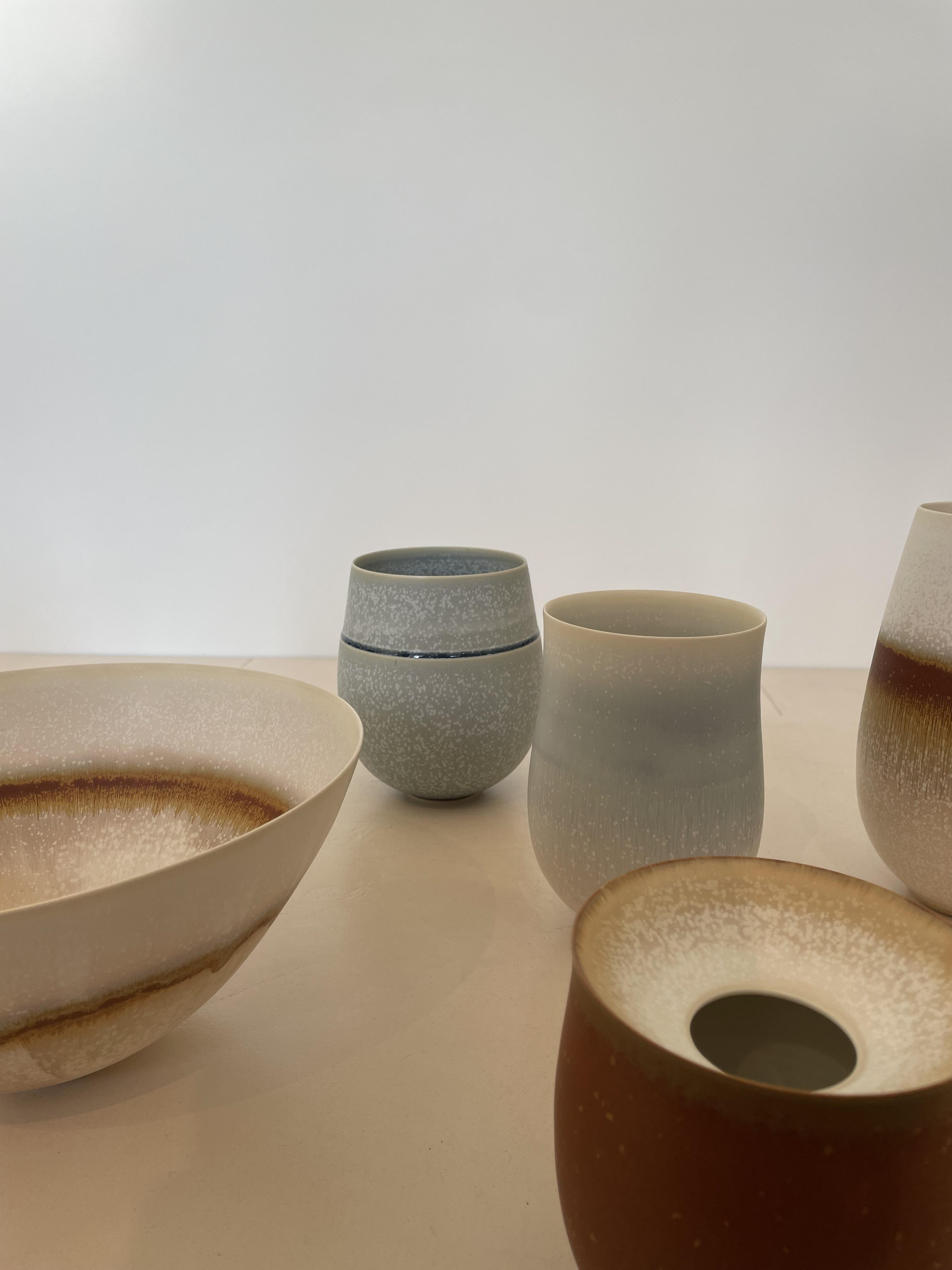

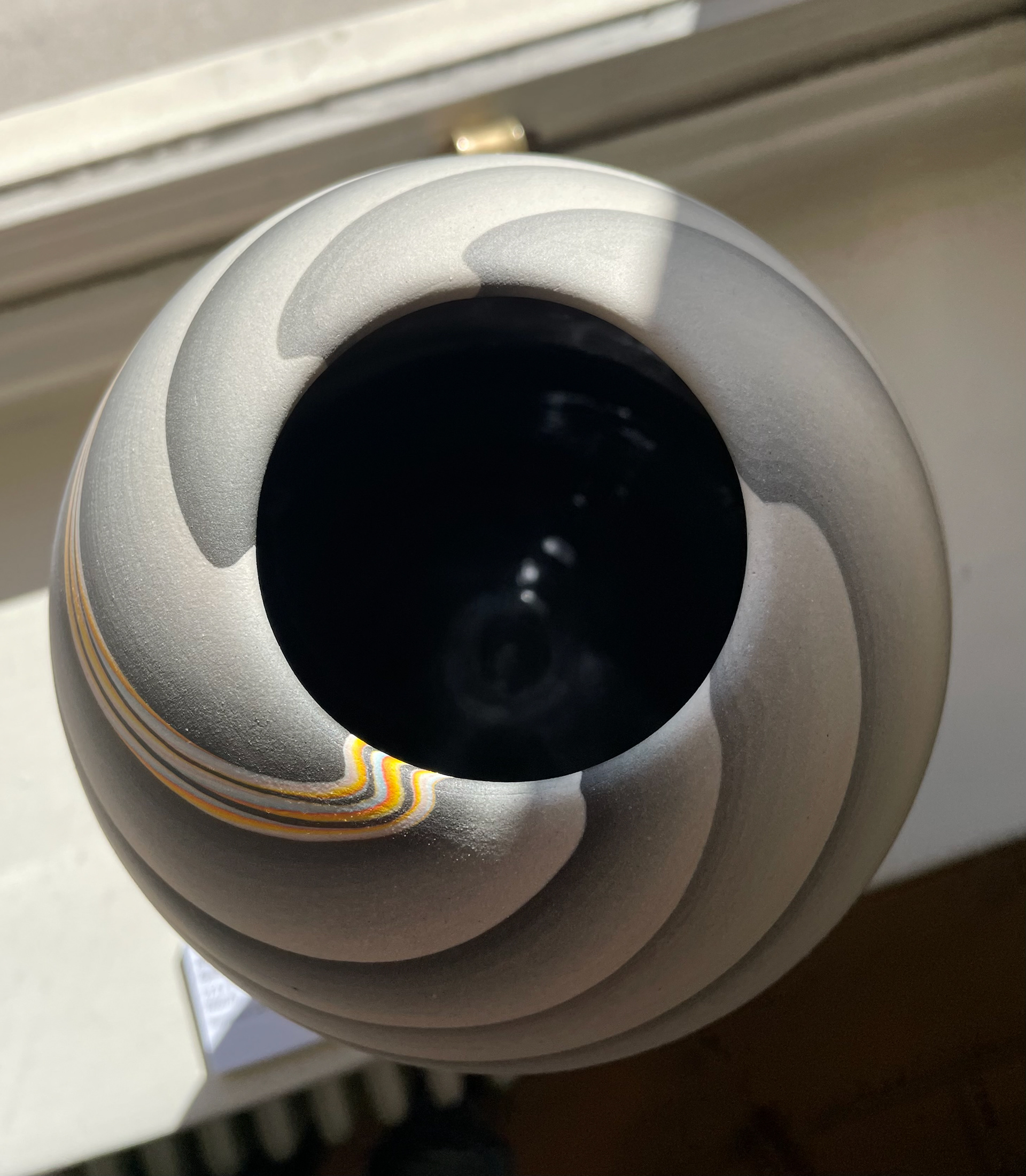

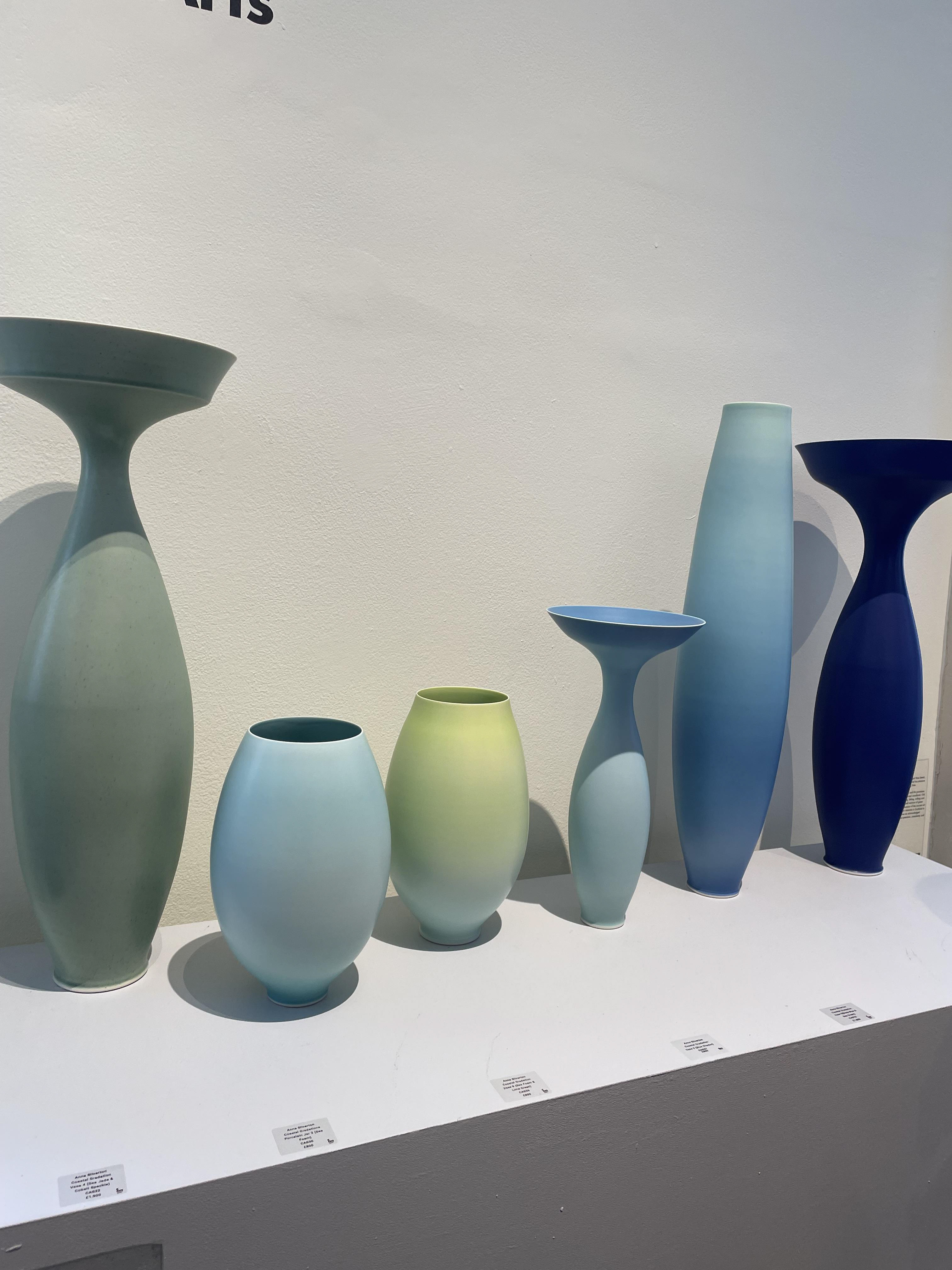
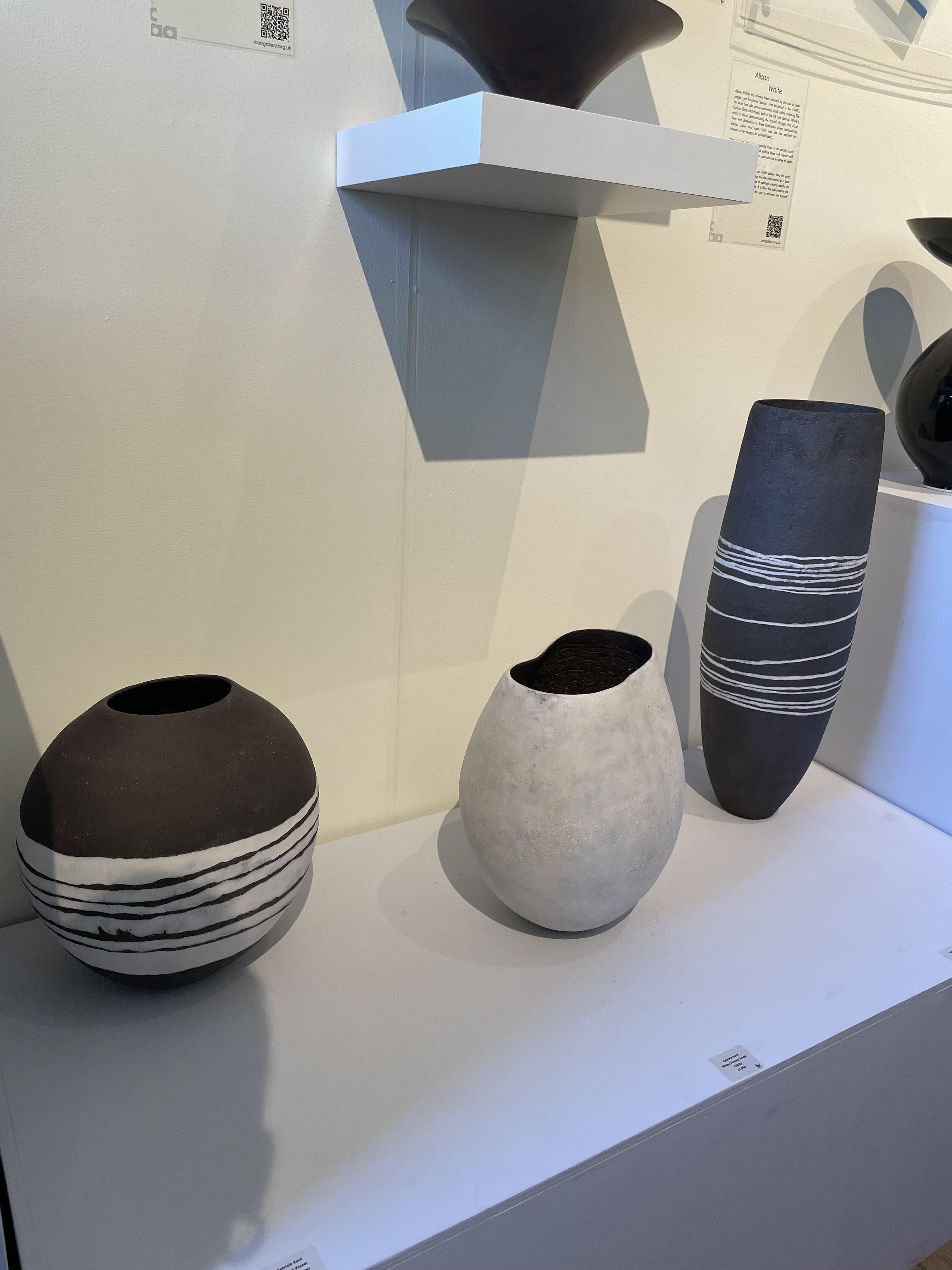
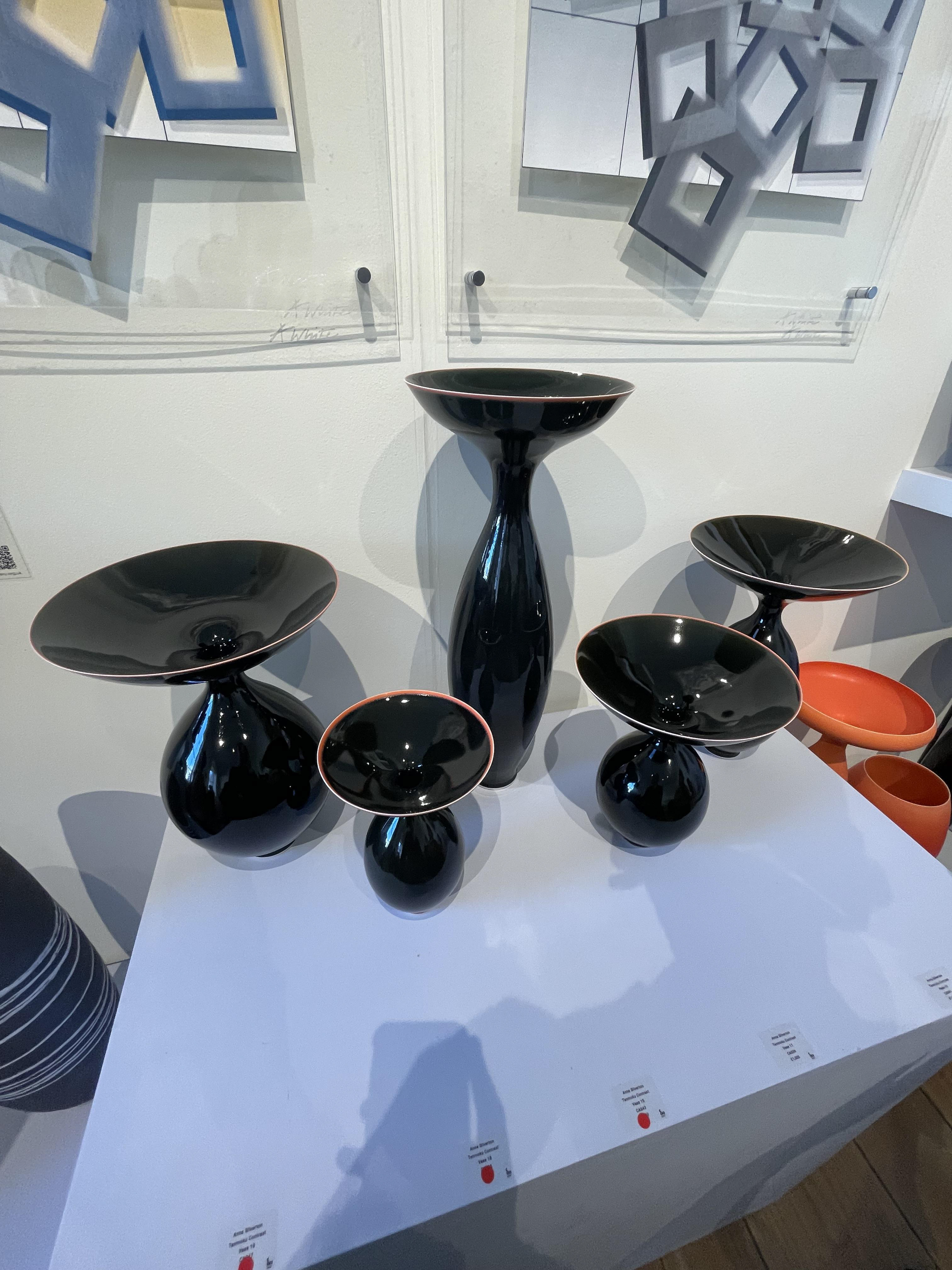
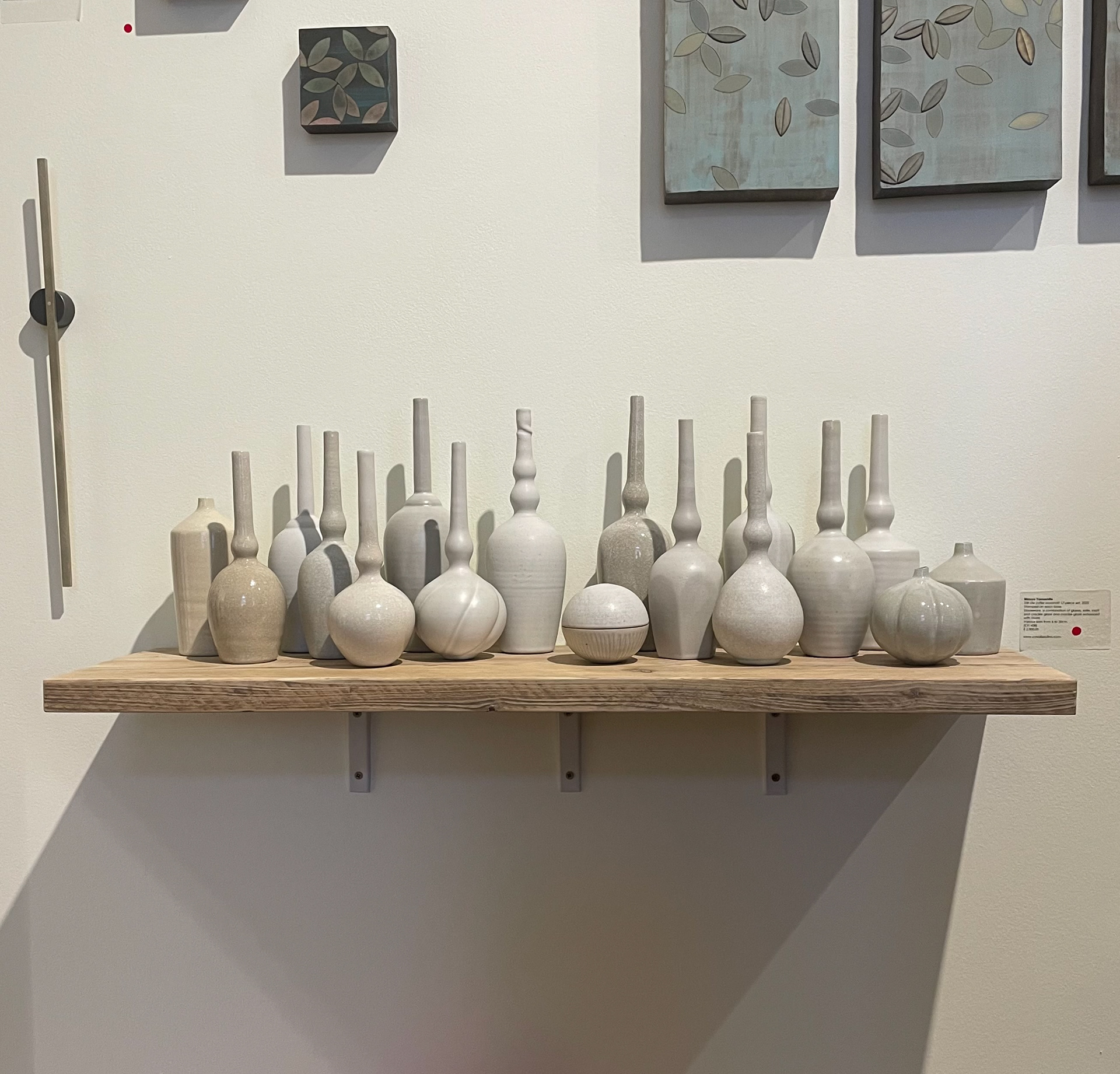
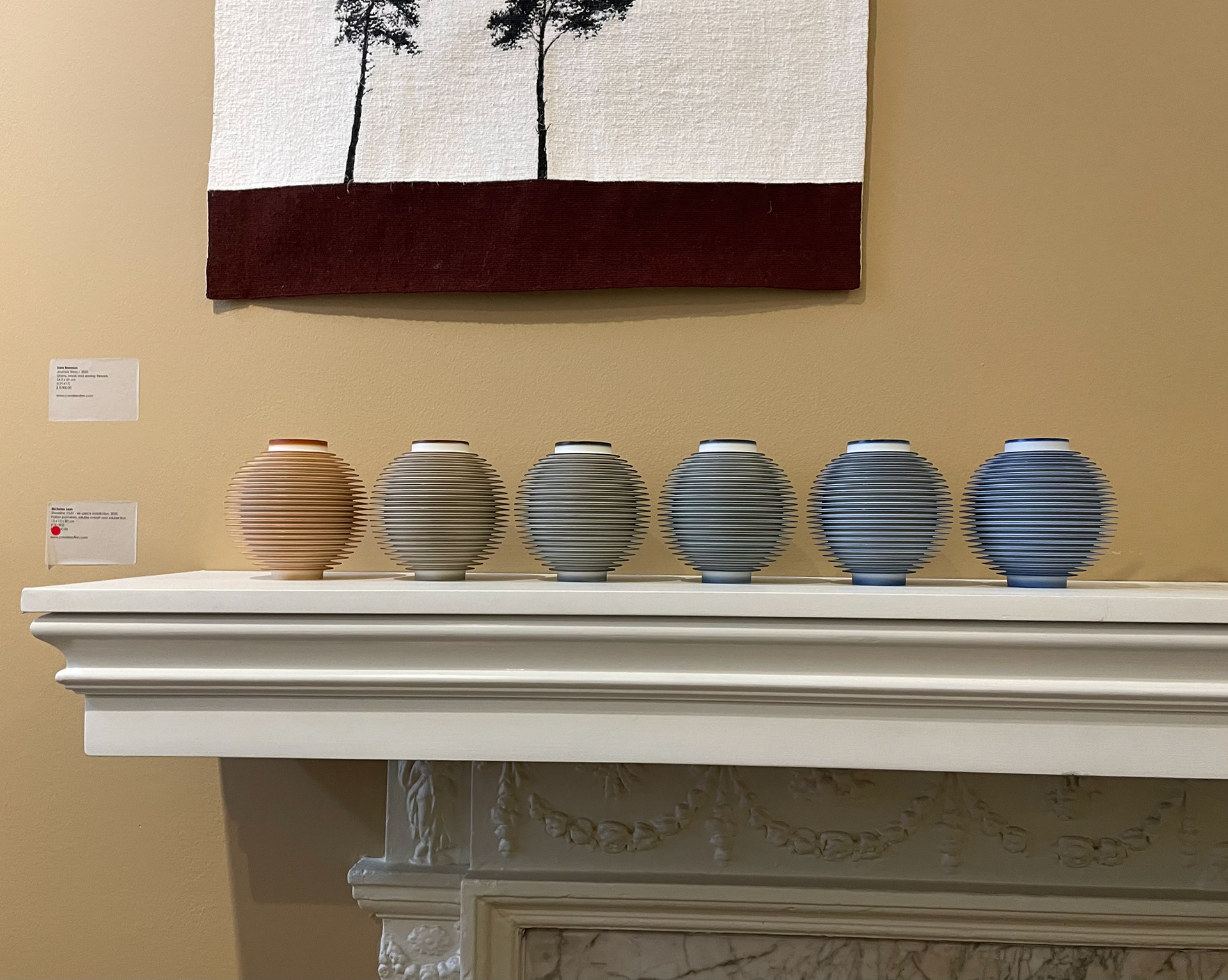

It was interesting going around the event and seeing how different people showcase their work. walking around seeing what I like and don't like about people's work displays and how I can incorporate these points into my own practice.
Things I like
-People's use of space and different layers that work well with the work
-lighting and how that enhances the work
-shelving and plinths of work
-Use of colour in displays enhances the work
-display of how the work would be displayed in homes
Things I don't like
-different labels and hand-written labels (not professional)
-not giving the work enough space
-work being on conflicting displays
-Dark lighting and negative shadows
-bad/ exposed fixtures of work
My visit to the Collect London Fair provided insights into various methods artists use to showcase their work, which impacts the viewer's experience and perception. Observing the diverse approaches, from minimalistic displays to more elaborate setups with lighting and props, highlighted the importance of presentation in enhancing the form and meaning of the artwork.
The use of different heights, clean shelving, and spotlight effects was particularly inspiring. These techniques not only draw attention to individual pieces but also create a cohesive and engaging visual narrative.
As I develop my practice, I am exploring these display strategies to ensure my work stands out. By thoughtfully considering elements such as height, lighting, shelving, and props, I can create a presentation that complements and elevates my ceramics. This reflection has underscored that the display is an extension of the artwork itself, playing a vital role in capturing and maintaining the viewer's attention. Incorporating these insights into my final pieces will not only enhance their professional finish but also make them suitable for gallery exhibitions.
Week 5 Review
Throughout this week, I have been deeply engaged in thinking about my final piece, beginning to draw ideas of what I want my work to look like and considering the meaning and impact I want it to have. I have been constantly reflecting on how I can improve my work and how it has evolved since Unit X. Although my work has shifted, it still retains similarities to my previous project. I am now exploring ideas to make this project stand out, focusing on the concept and details I want to explore.
As my making process develops, I am gaining a clearer understanding of what I want my work to be and what elements to include, incorporating personal preferences to achieve a more professional finish. I never imagined my work being displayed in a gallery, but this week, I realised that it could fit well in such a setting. I now need to explore and identify galleries that suit my work and align with my style.
Visiting Collect and V&A Museum was particularly enlightening, as it made me reflect on the presentation of my work. I had not given much thought to how my work is displayed, but seeing other exhibits at Collect made me realise that the display is an extension of the work itself and a crucial way to capture people's attention. I am excited to start experimenting with the display of my work, considering aspects such as height, lighting, shelving, and tables, and how each element can elevate my pieces.
Week 6- Tutorial Notes
Display of Work
A well-displayed work attracts attention and makes it easier for people to notice and appreciate your creations. The way work is presented can provide context and enhance the viewer's understanding of the piece, conveying the intended message or story more effectively. A thoughtful display demonstrates professionalism and care, which can positively influence how your work is perceived by others. An engaging display can captivate the audience, encouraging them to interact more with your work and fostering a deeper connection. The presentation can amplify the impact of your work, making it more memorable and leaving a lasting impression on viewers.
Shelving allows for eye-level display, making my vessels easily visible and accessible while providing a structured way to organise them, highlighting both individual beauty and collective presence. The grouped arrangement on shelves creates a sense of accumulation, which can be visually striking and thought-provoking, allowing me to tell a story and journey. Using shelves made of a different material like wood or steel can create a contrast with the natural and industrial, making them stand out. This approach invites viewers to interact with my work, encouraging close inspection and appreciation of details.
Edmund de Waal
Edmund de Waal's work is significantly enhanced by his thoughtful and innovative display strategies, which emphasise repetition, accumulation, and the interplay between art and utility. His installations often feature tightly packed groups of vessels, creating a sense of accumulation that lies between order and chaos, adding a dynamic and fascinating element to his work. De Waal's use of shelving allows him to explore themes of memory and collection. By placing his vessels in tightly packed groups, he creates a sense of intimacy and connection between the pieces. This approach also highlights the individual beauty of each vessel while emphasising their collective presence.
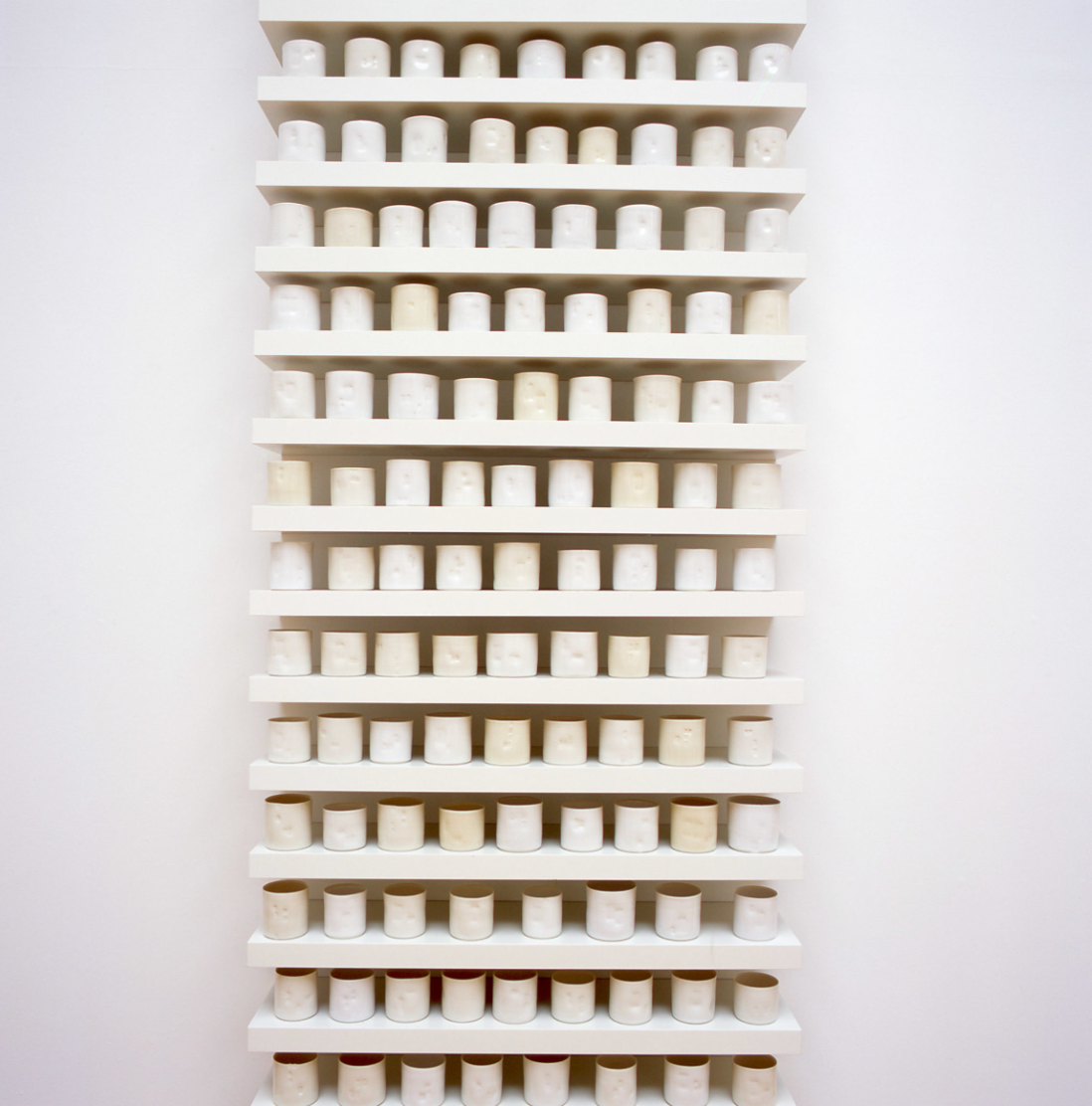
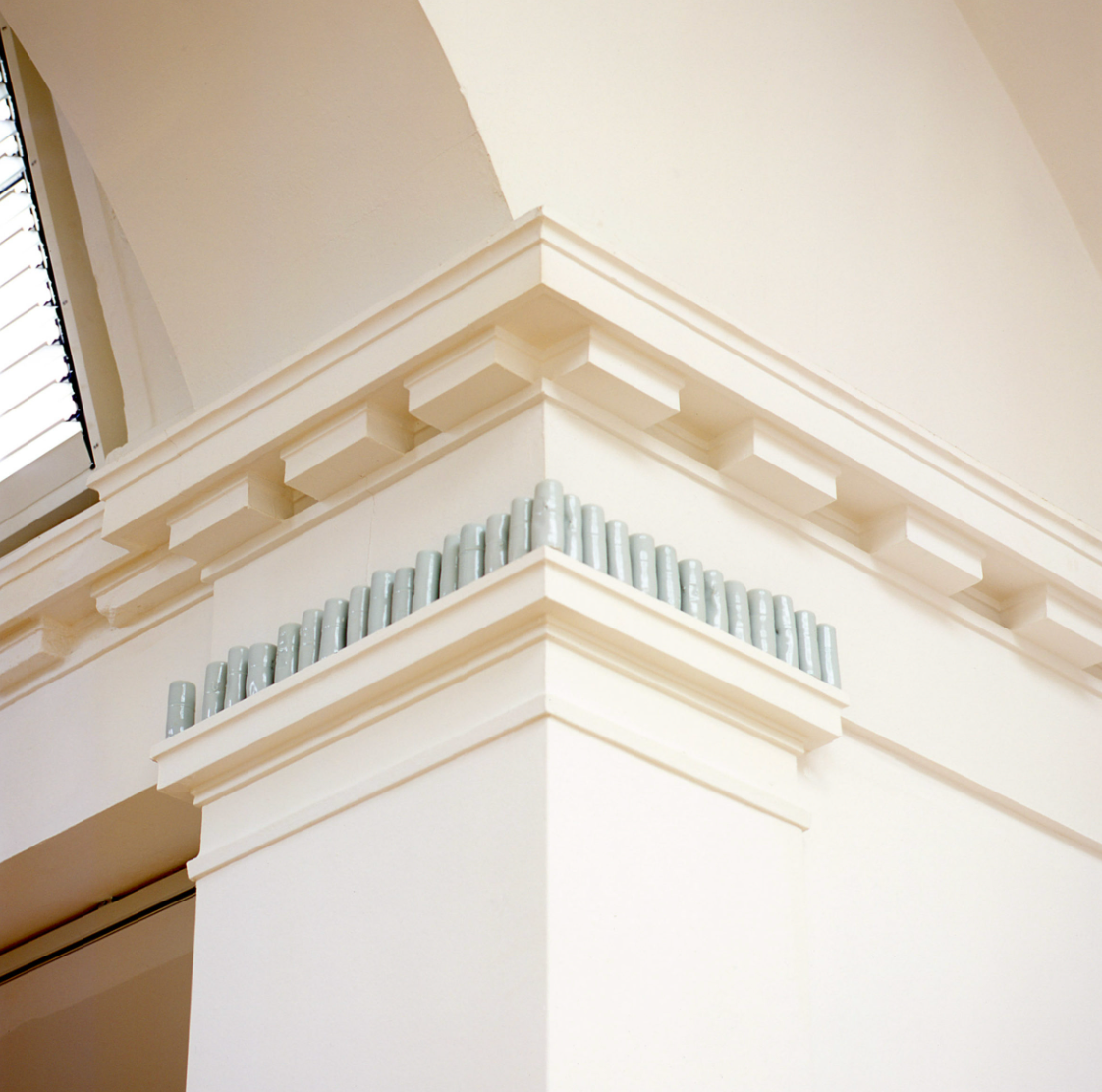
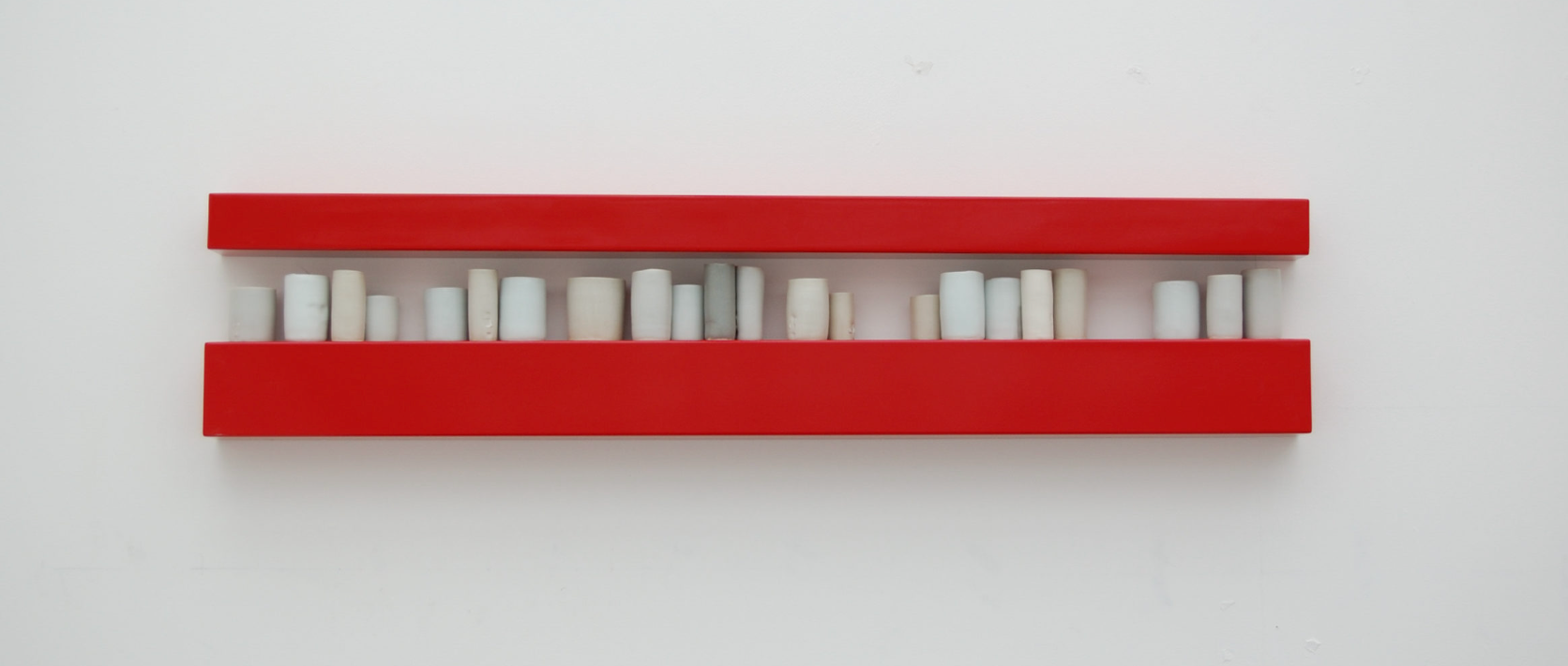
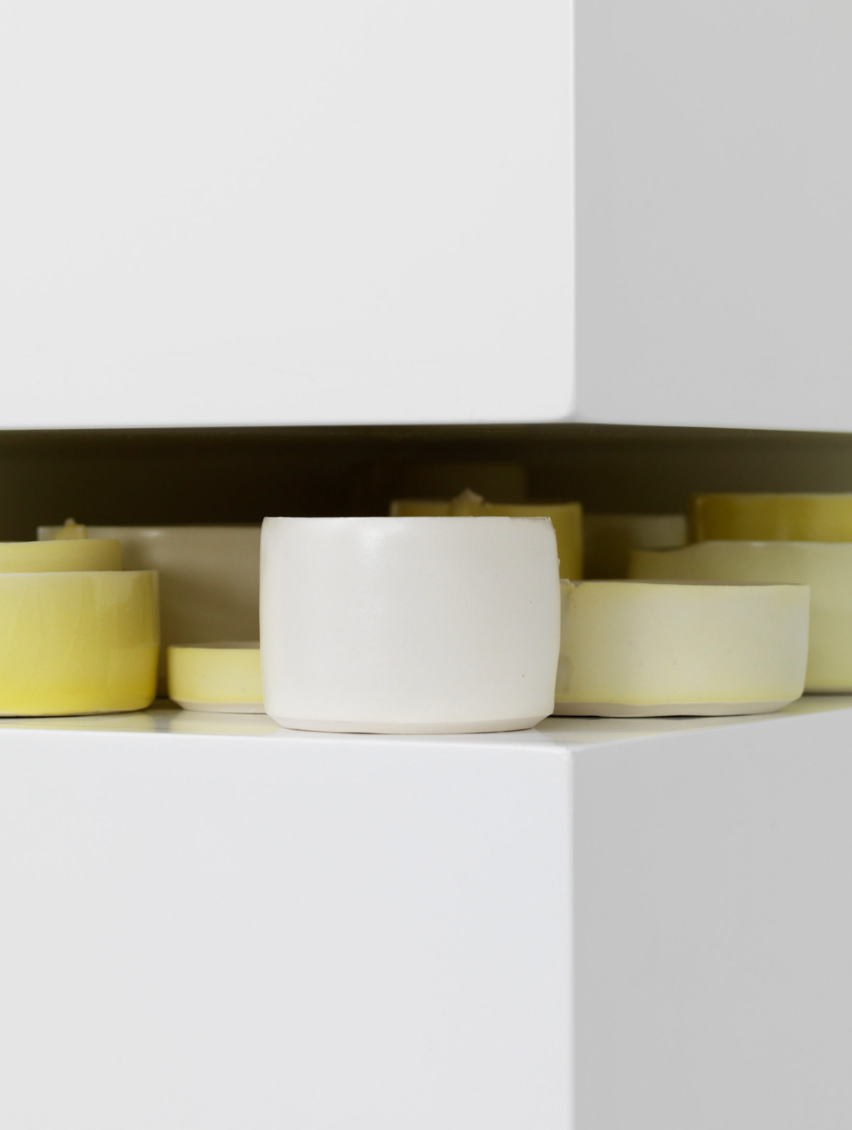



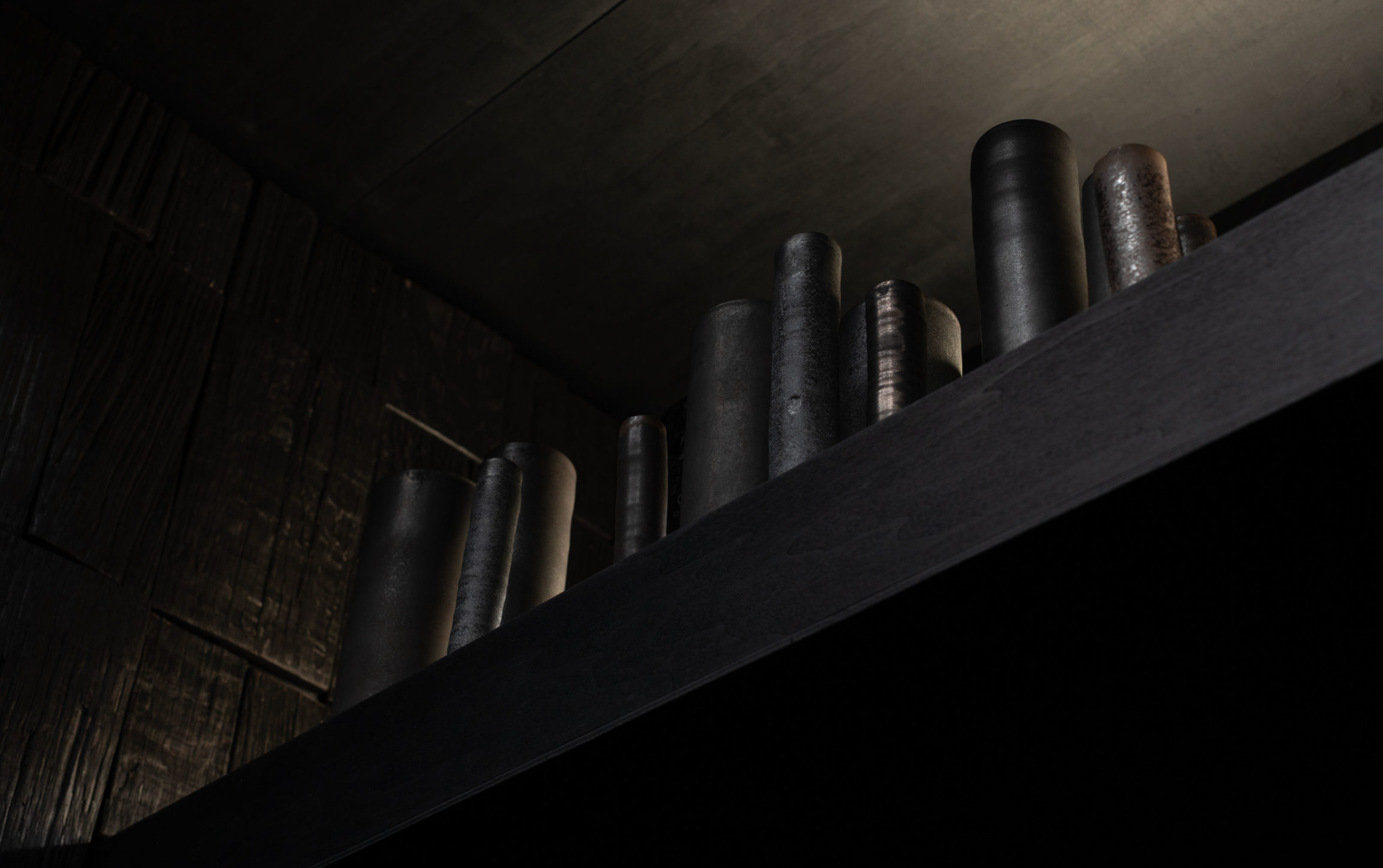

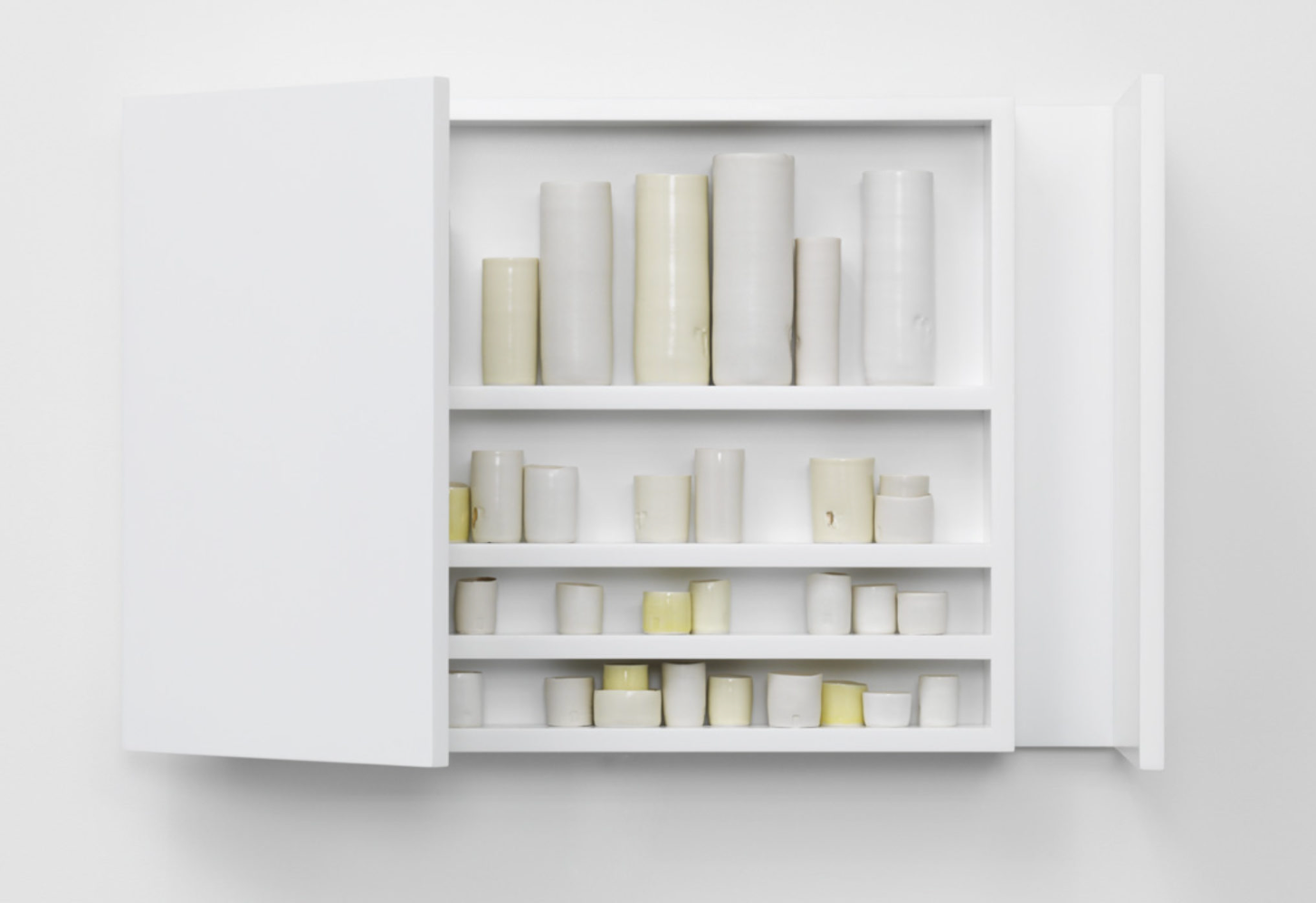

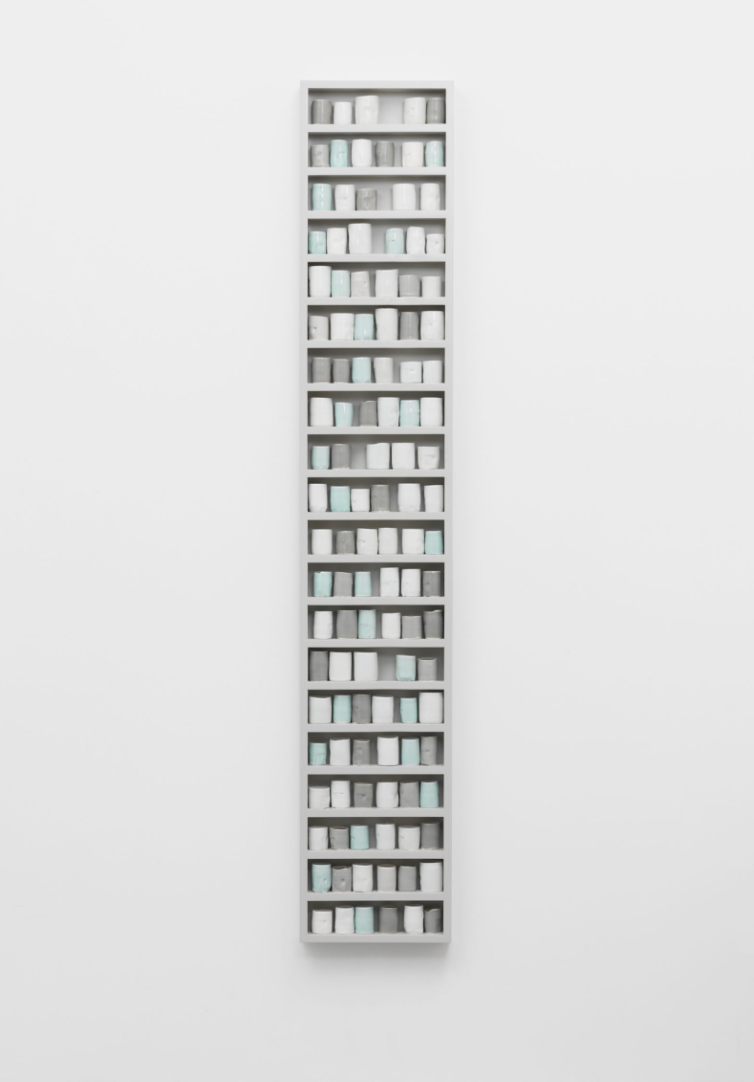
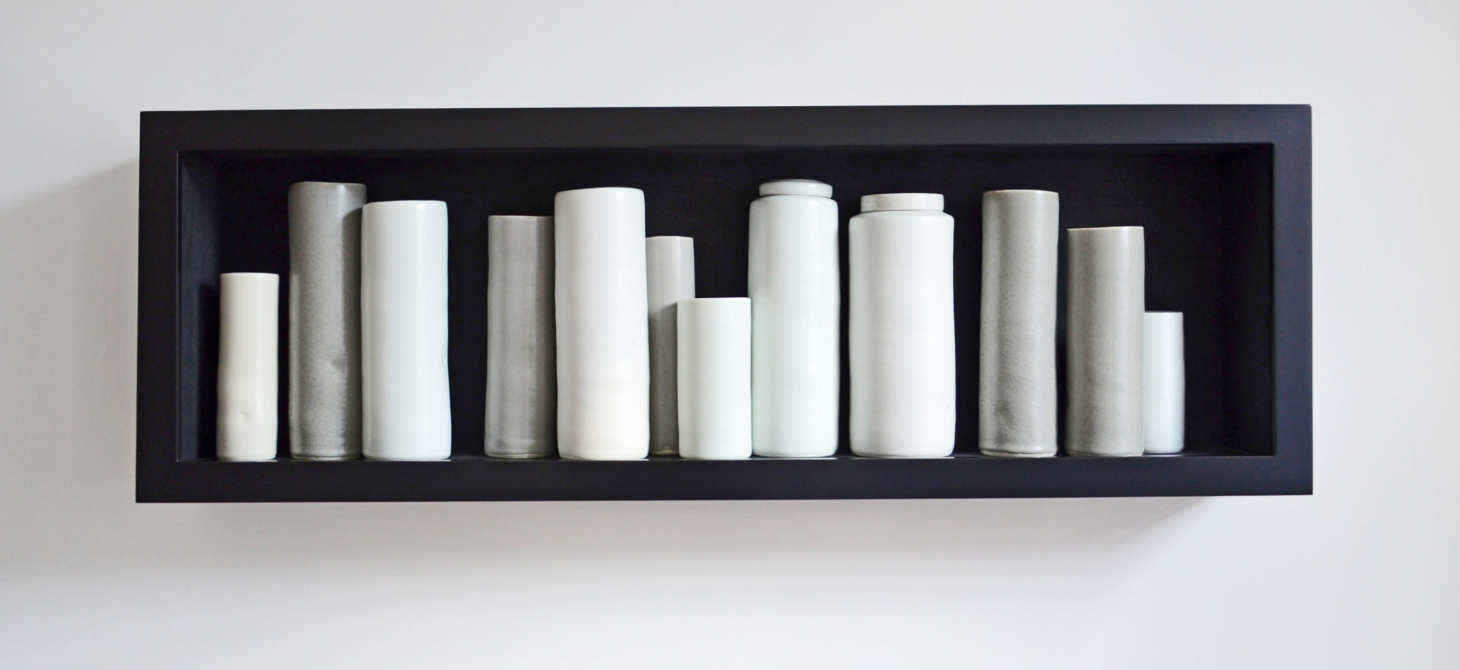
The shelving itself often becomes an integral part of the artwork, framing the vessels and influencing how they are perceived. For example, a red lacquer shelf installed high on a gallery wall can draw the viewer's eye upward, creating a sense of elevation and reverence for the pieces displayed. This thoughtful integration of shelving into his installations enhances the overall impact of de Waal's work, making it not just about the individual pieces but about the relationships between them and their environment.
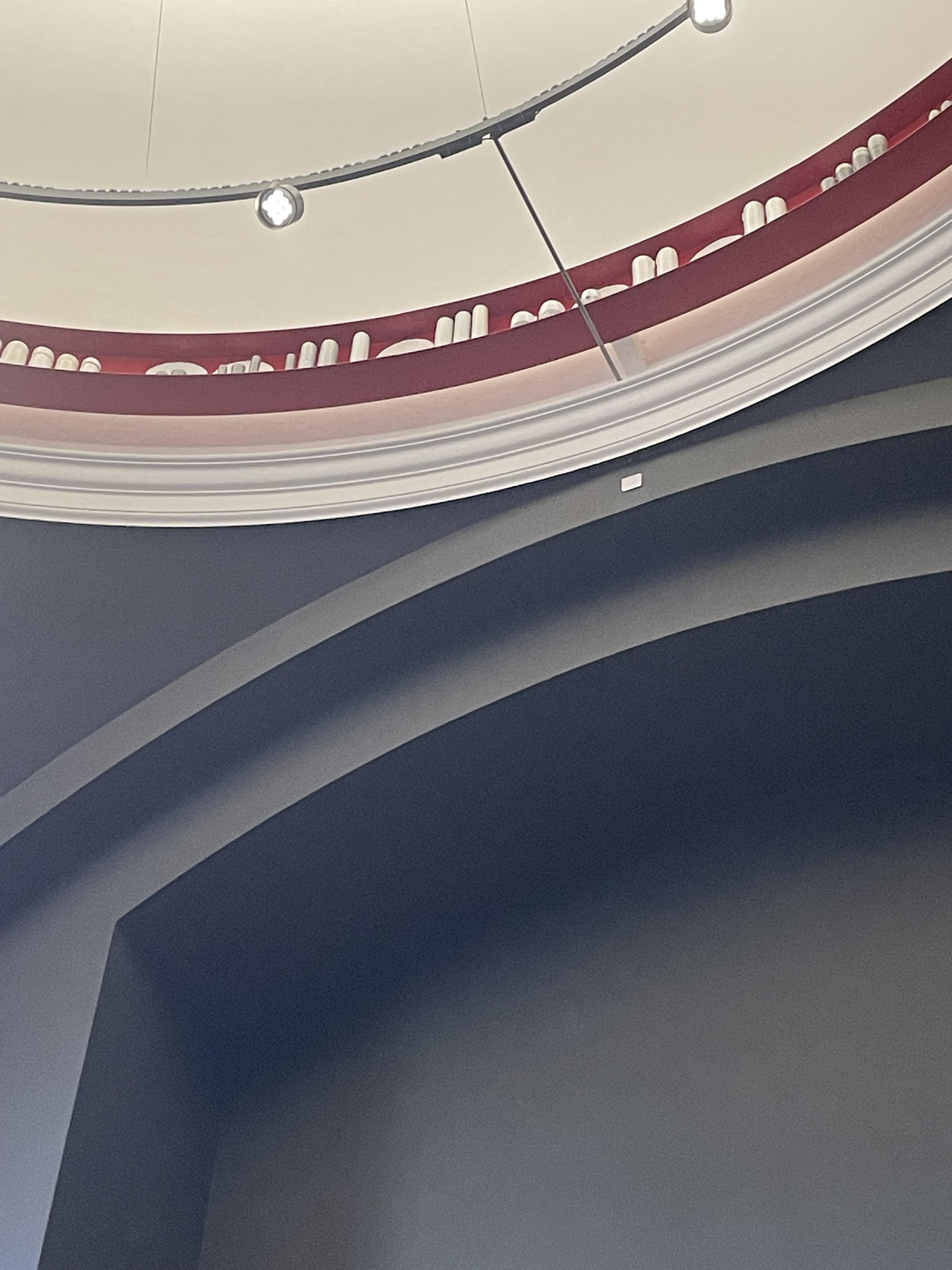
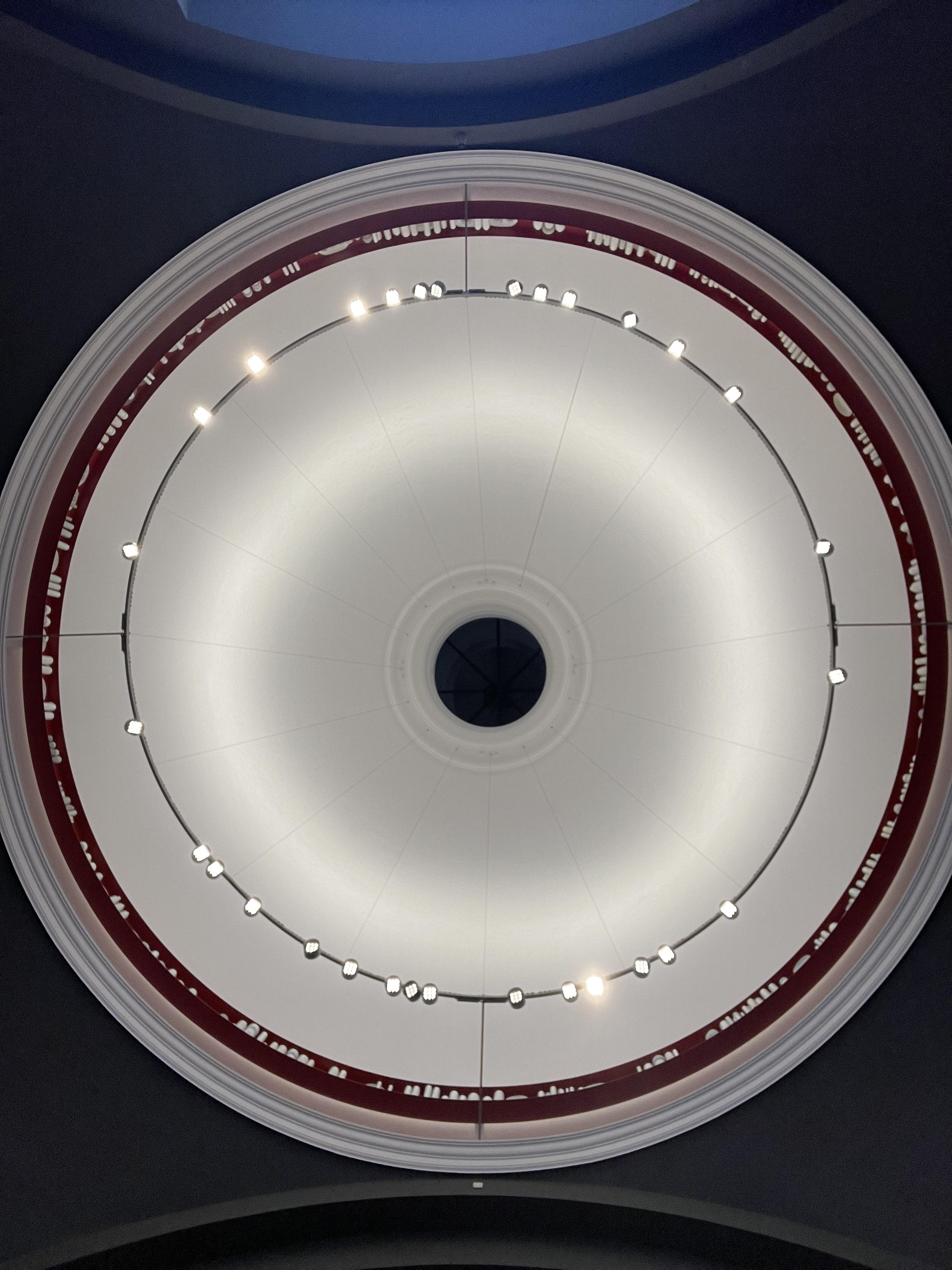

Whilst visiting the V&A i was able to see his work and the impact his display has, his piece "Signs and Wonders" being suspending so highly was very impactful filling up the room and the red band around drew your attention to in straight away although far suspending in the ceiling you could still see the vessels that ran along the shelving transforming the way viewers interact with his ceramics. The careful arrangement and thoughtful use of space invite viewers to engage more deeply with the work, considering not just the individual vessels but the stories and connections they represent. This method of display underscores the themes of memory, collection, and the passage of time, making his installations both visually compelling and intellectually stimulating
Gwyn Hanssen Pigott
Gwyn Hanssen Pigott was an acclaimed Australian ceramic artist known for her serene and contemplative works. creating functional pottery to producing still-life groupings of porcelain.
. Hanssen Pigott's work is celebrated for its simplicity, elegance, and the spiritual calmness it evokes. In terms of display, Hanssen Pigott's approach is central to the impact of her pieces. She often arranged her ceramics in still-life compositions, using minimalistic and thoughtful setups that highlight the purity and form of each piece. Her displays typically feature clean lines and uncluttered spaces, allowing the viewer to appreciate the subtle details and the interplay of shapes and glazes
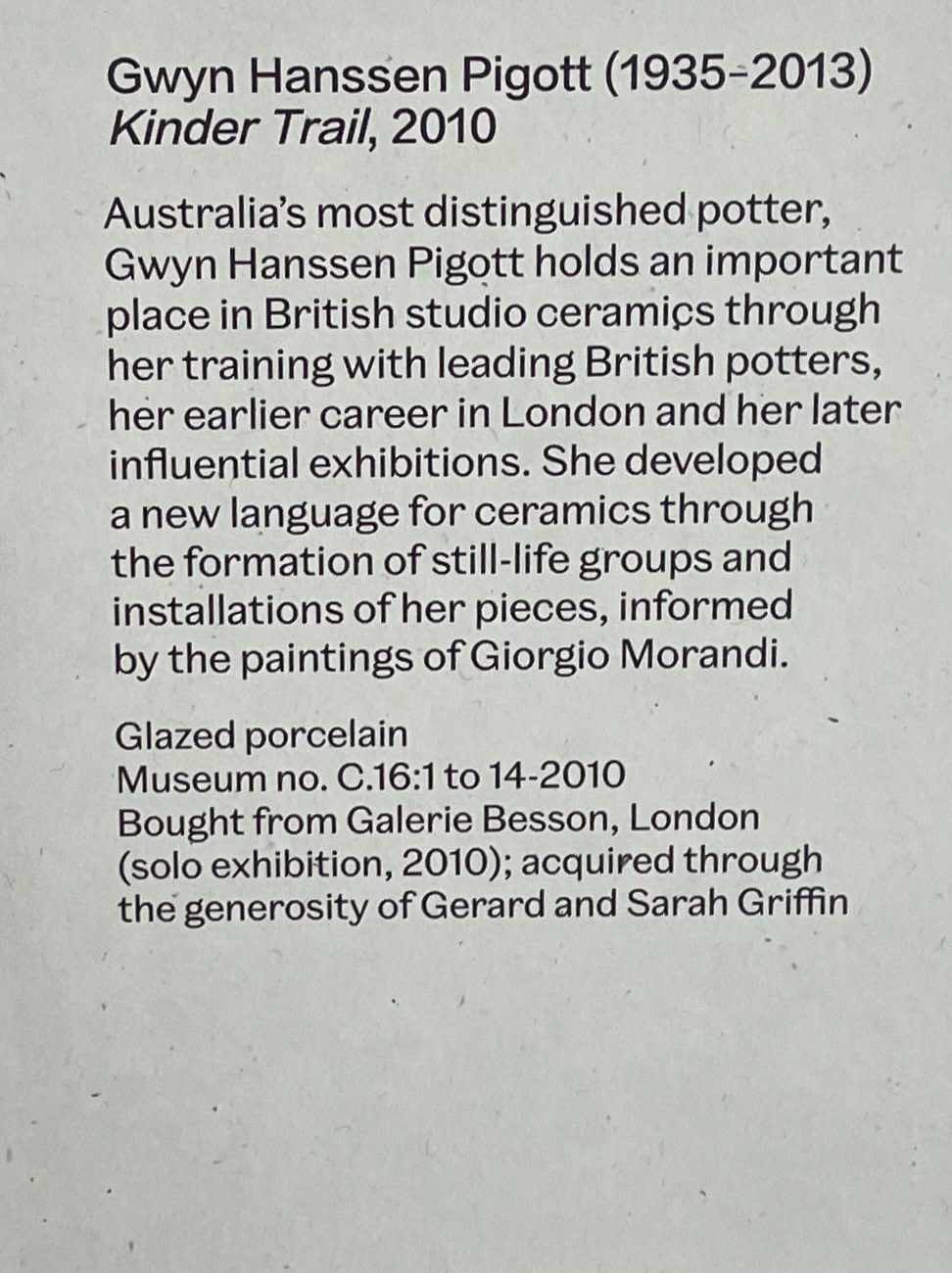
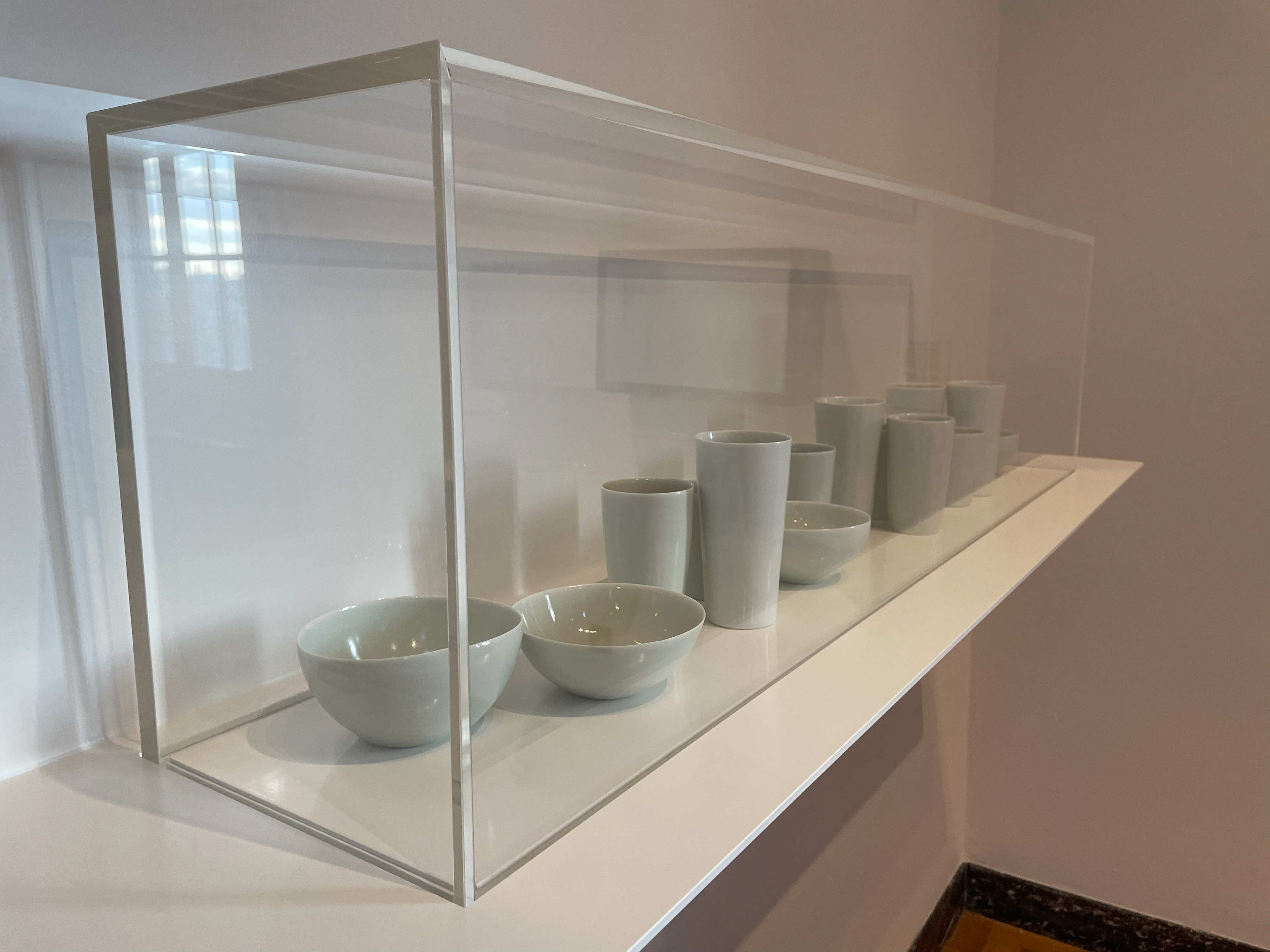
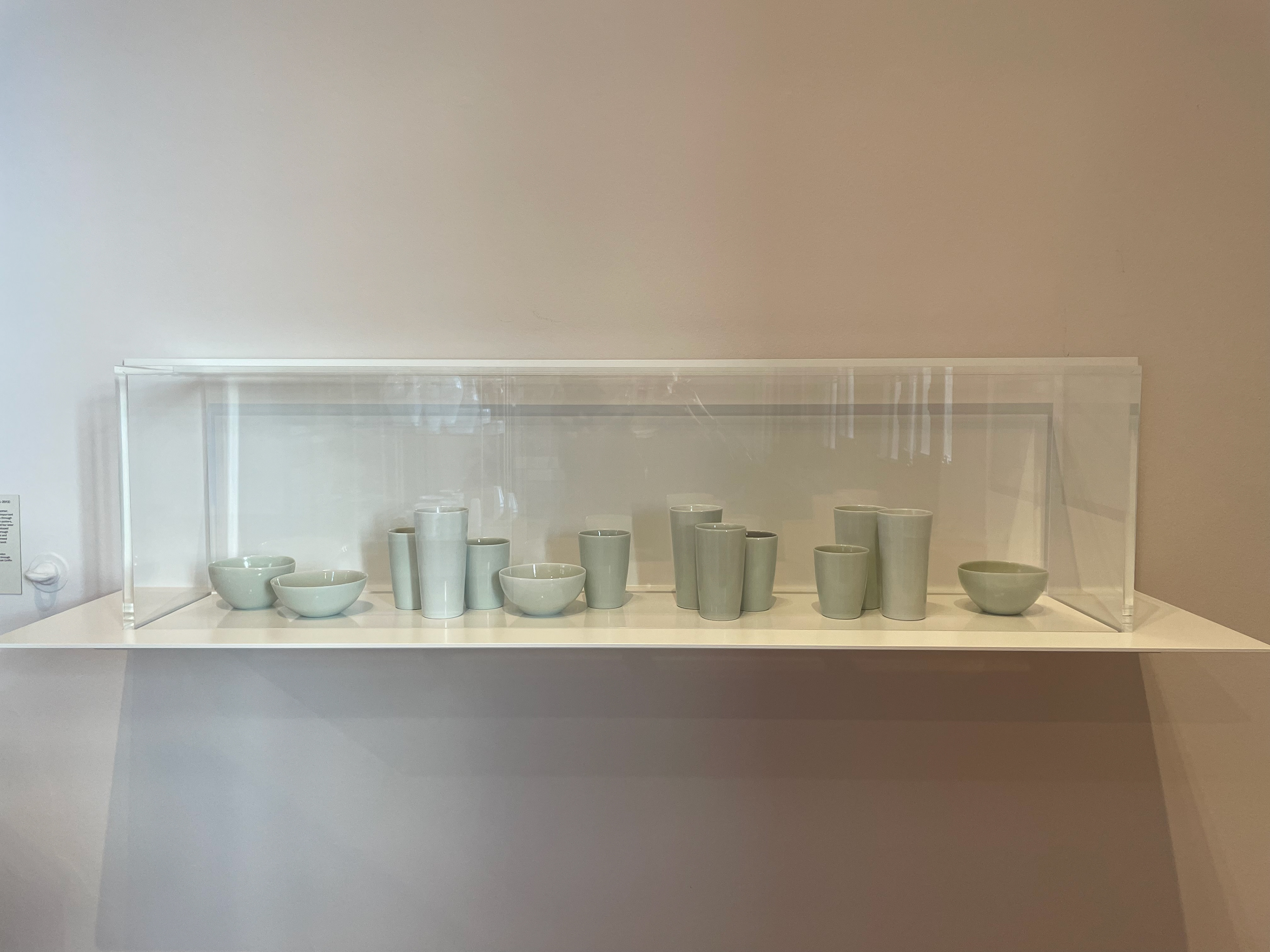
Hanssen Pigott's use of glass cabinets and window ledges to display her work creates a sense of airiness and light, enhancing the quality of her ceramics. The careful placement of her pieces, sometimes in groups that suggest a narrative or connection, invites viewers to engage with the work on a deeper level. The use of lighting is also crucial, as it accentuates the translucency and texture of the porcelain, adding to the overall serene and meditative atmosphere
By adopting similar display techniques, I can elevate my ceramic pieces, ensuring that the presentation complements and enhances my work. using clean, minimalistic setups, thoughtful groupings, and strategic lighting to highlight the details of my vessels.
Reflection Of Week 6
During week 6, I made significant progress in my project, particularly in the development of my final pieces. My tutorial with Jonathan Boyd was important, making me think deeply about the purpose and impact of my work. This reflection is an ongoing process, but I am focused on defining the core message and significance of my pieces.
One major aspect of my work this week involved perfecting the final finishes. This included paying close attention to glaze application, QR code integration, and overall detailing. I explored various glazes to understand how they can elevate and tell a story, considering their functionality and the balance between natural and industrial elements. Questions such as whether a full body of glaze might detract from the piece, or how glaze can be an added element to tell a story
The additional insights from Gavin Hanson-Poynt's exhibition at the V&A further emphasised the significance of thoughtful display. By focusing on careful grouping and simple lighting, Hanson-Poynt ensures that the creative process is transparent and the details are highlighted. This approach has inspired me to consider how I can present my work in a way that enhances its impact and engages viewers.
Overall, week 6 was a period of refinement and idea development. This week has reinforced the importance of thoughtful presentation and details, which I will continue to explore as my work progresses.
Week 7- Tutorial Notes
Max Lamb
Max Lamb is renowned for his innovative approach to ceramics, particularly his use of fine bone china. His work often combines raw, unglazed exteriors and glazed interiors. This choice highlights the natural texture of the material while ensuring functionality. For instance, in his "Crockery" collection, Lamb carves plaster models by hand, which are then slip-cast into fine bone china. The interiors of these pieces are glazed to make them suitable for everyday use, while the exteriors remain raw, reflecting the surface texture of the original plaster. This contrast between the glazed and unglazed surfaces not only emphasises the craftsmanship involved but also creates a tactile experience that connects users to the material's origins. The raw exterior provides a sense of authenticity and grounding, while the glazed interior ensures practicality. This thoughtful approach to glazing and texture is a hallmark of Max Lamb's ceramic work, which blends aesthetic appeal with functional design.
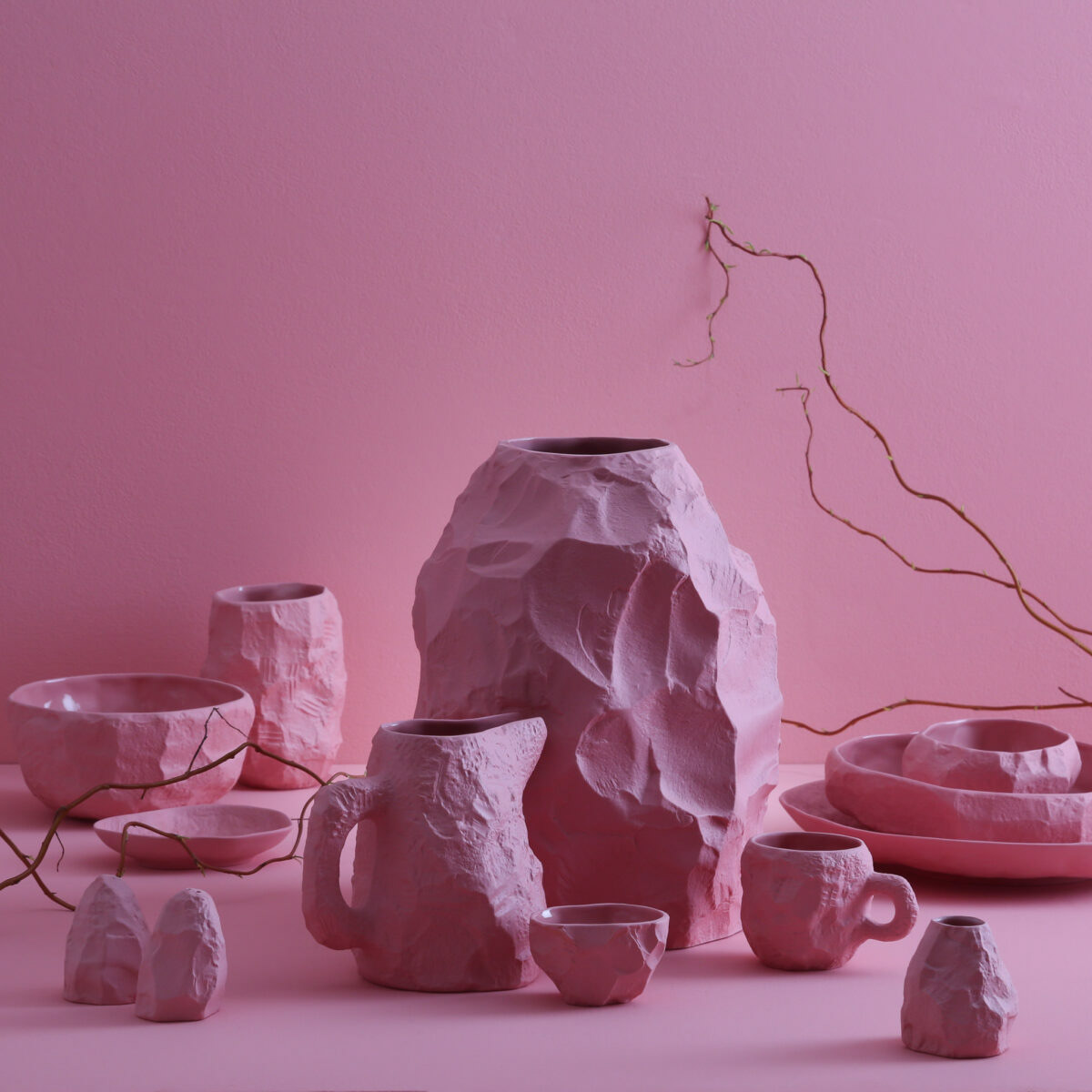
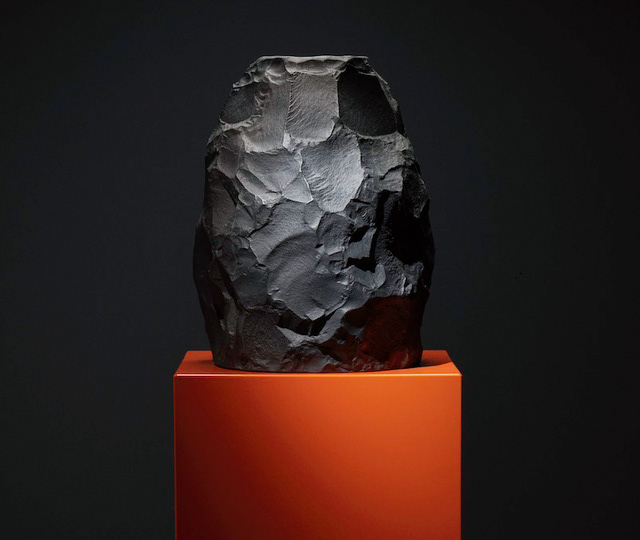

These vessels, whether they are bowls, mugs, or vases, embody a sense of authenticity and connection to the natural world.The tactile, unrefined surface of raw ceramics invites touch, enhancing the sensory experience of using these items in daily life. This physical interaction can evoke a sense of comfort and familiarity, making everyday rituals like drinking tea or arranging flowers feel more intimate and grounding. Moreover, the organic imperfections and unique textures of raw ceramics highlight the craftsmanship involved in their creation. Each piece tells a story of the hands that shaped it, adding a personal touch to the home environment. This connection to the maker and the material fosters a deeper appreciation for the objects we use, transforming them from mere functional items into cherished elements of our living spaces. The understated beauty and timeless quality of raw vessel ceramics contribute to a cozy, welcoming atmosphere, reinforcing the idea of home as a sanctuary of comfort and warmth.
Free Vessels
I want to carefully consider the settings where people will discover my vessels, as this plays a significant role in how they are perceived. Since my vessels are inspired by the comforts of nature and home, I believe they would be best suited to natural settings. These environments would highlight their organic details and draw more people to them, encouraging reflection and appreciation. However, I also find the idea of placing them in industrial, red-brick locations intriguing. This juxtaposition of natural forms in urban settings could emphasise the desire for more nature in the city and the unexpected discovery of delicate vessels in a bustling urban environment. This contrast could create a powerful and thought-provoking experience for viewers.
Exploring where to place my vessels, I decided to start by looking at photos I've taken around Manchester. Each location in these photos holds a special memory for me, reflecting my experiences over the past three years. Most of my photos are centered around the heart of Manchester, capturing its essence and my personal journey here. I believe these familiar and comforting places would be ideal for distributing my vessels for free. By placing them in locations that hold significance for me, I hope to connect with others who share similar memories and inspire them to reflect on their city and sense of place.
Natalie Bell
Natalie Bell's colourful ceramics are a vibrant celebration of colour and form. She primarily uses the slip casting technique, pouring stained porcelain slip into handmade moulds. This method allows her to create pieces with consistent shapes and intricate details. Her work is characterised by bold, bright colours and repetitive patterns, which she believes can significantly impact the atmosphere of a space and the emotions of those within it. Each piece is carefully crafted to bring joy and a sense of fun to the interior
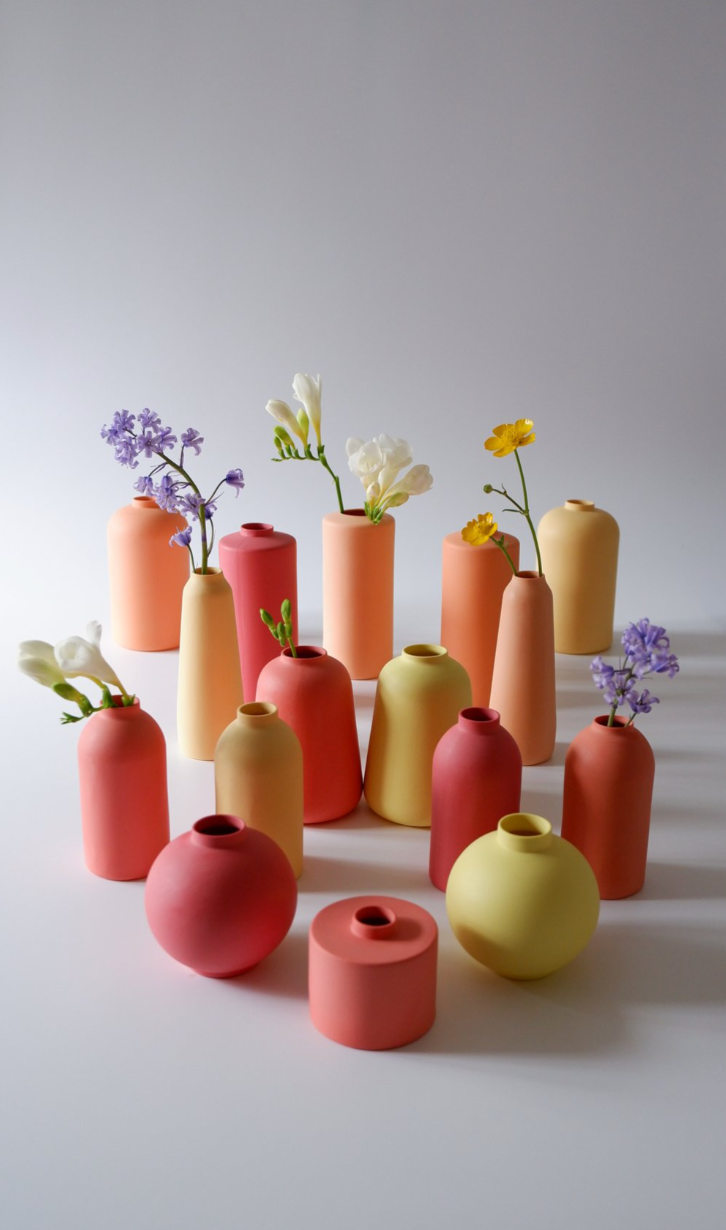
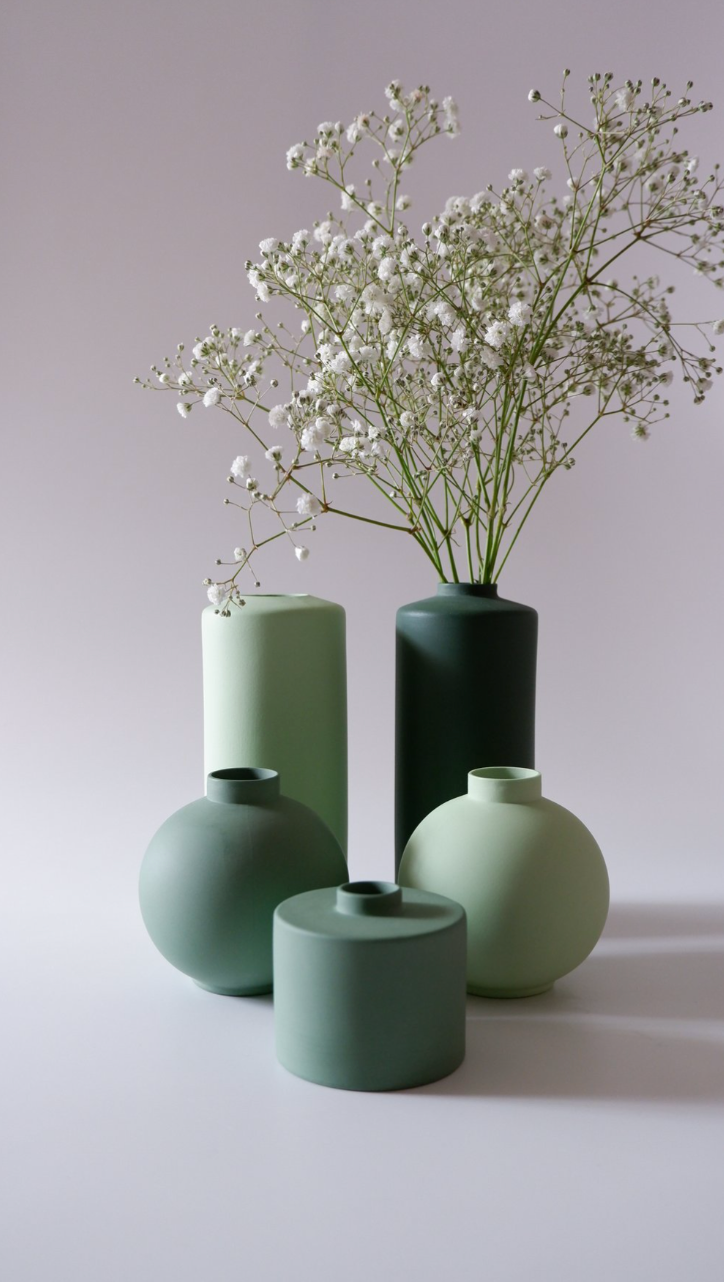
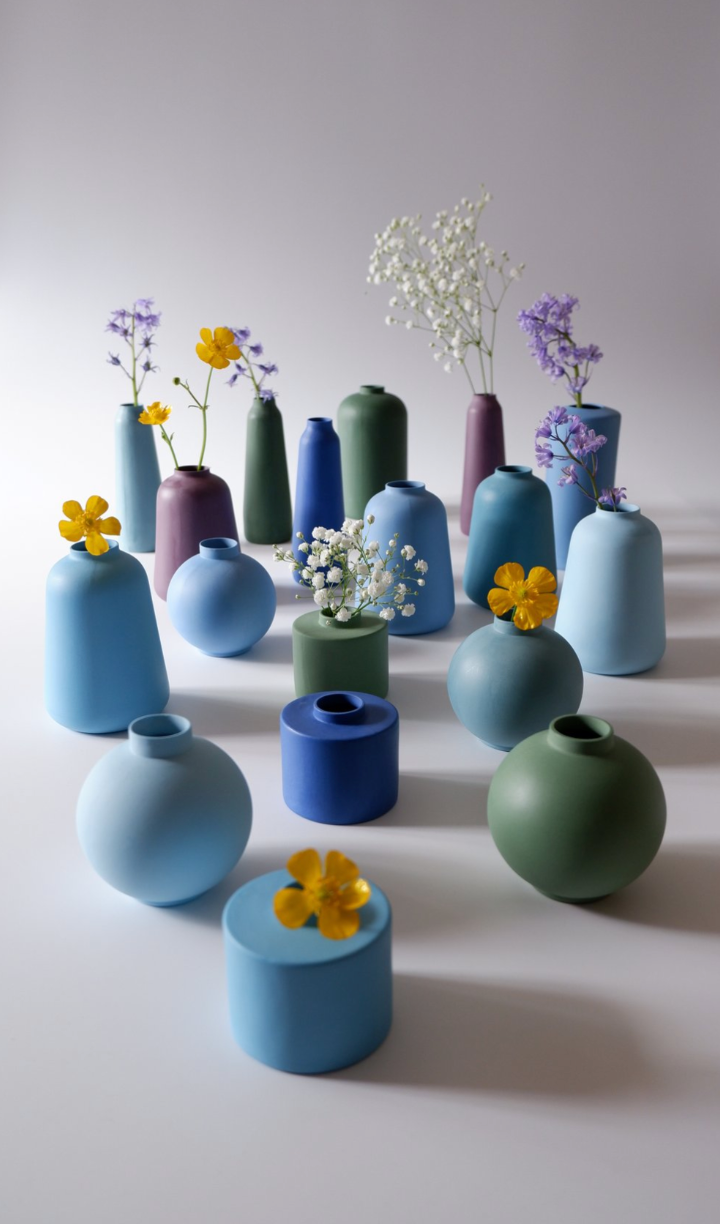
Reflection Of Week 7
This week, I felt very positive about the progress I made on my project. I focused extensively on my final idea, drawing up sketches and making detailed notes in preparation for my final piece. Although I will continue to develop my work throughout the final process, I have made significant improvements that will allow me to start making next week. I am really happy that I was able to complete all my development and planning as per my timetable, ensuring that I am not behind schedule. This preparation is crucial as there is still a lot to do, but being ready for next week keeps me on track.
I concentrated on my final idea, writing up the steps I need to consider and the specific details I need to include, such as the openings and rims. Additionally, I want to further research my audience, as I have thought about it but haven't had much time to fully delve into it. This research is essential as it will provide better information about galleries, selling, and pricing.
This week has really boosted my confidence in the direction my work is going and has set a solid foundation for starting my final piece. Although there is still much to do, I am pleased with the progress and understanding I have gained. I am constantly developing and considering new ideas, which keeps my work dynamic and evolving
Week 8
Display Of Ceramics
The display of my final project is crucial because it significantly enhances the viewer's experience and perception of my work. A thoughtful and well-executed display can highlight the intricate details, forms and craftsmanship of my ceramics, making them more engaging and impactful. It also helps to convey the intended narrative and emotional connection, ensuring that the presentation complements and elevates the artwork.
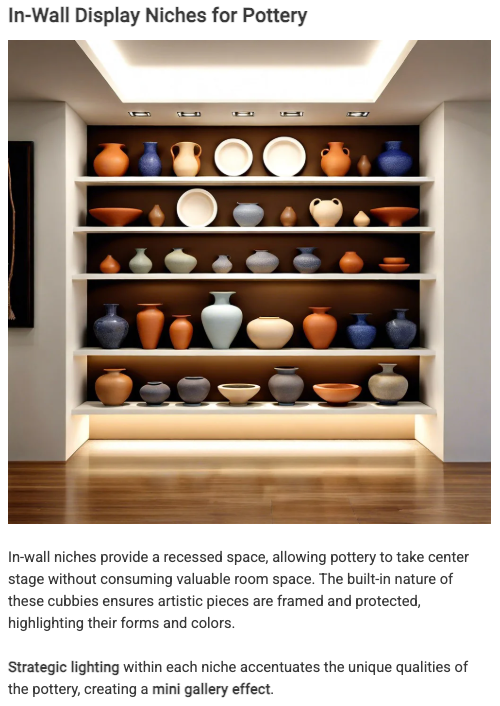


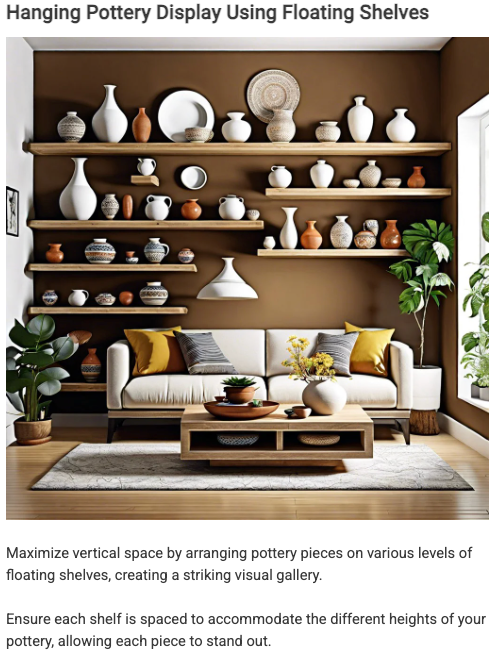
info found at https://thismakesthat.com/pottery-display-ideas/
Floating Shelves: Use floating shelves or photo ledges to display larger items that don't belong on a wall, and in a large collection. Grouping items together based on colour or style can create a cohesive and sophisticated look
Thoughtful Grouping and Lighting: Thoughtful grouping and simple lighting can highlight the details of my ceramics. Using different heights and layers can add visual interest, while spotlighting specific pieces can draw attention to their features
Minimalistic vs. Elaborate Displays: Minimalistic displays that focus on the simplicity and elegance of the ceramics, or more elaborate setups that include additional elements like lighting or props to create a richer narrative

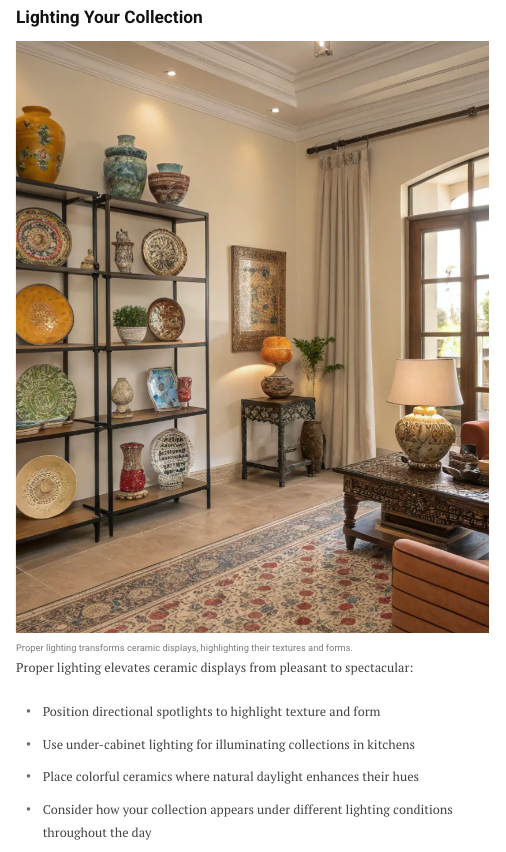
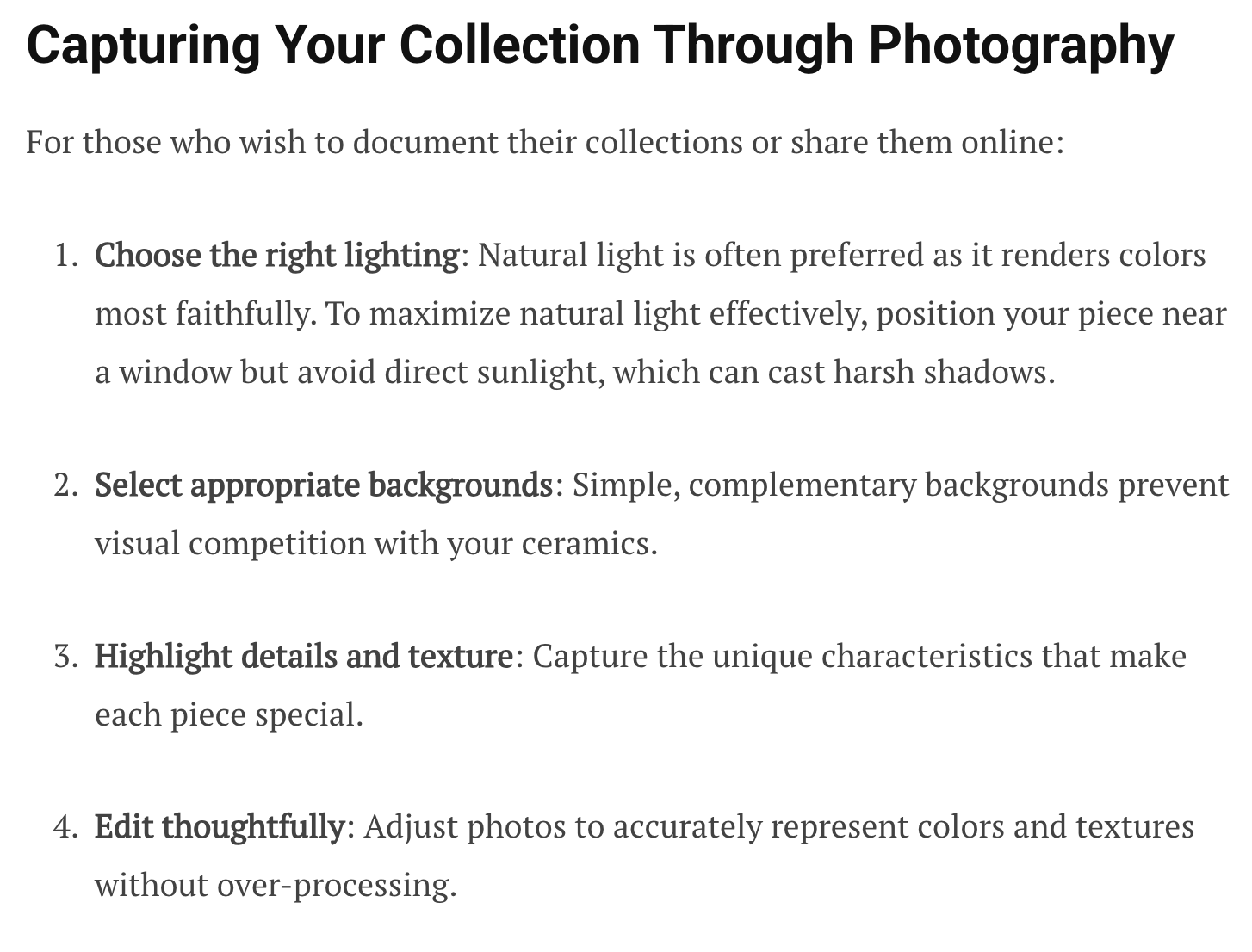
info found at https://spacewelove.com/blog/showcase-your-ceramic-collection-with-these-designer-tricks/
I am really interested in the idea of using a long shelving unit for my work. I believe this will truly accentuate my vessels and display them effectively. The concept of walking down the shelf and taking the audience on a physical journey is compelling, as it mirrors my own journey of moving away. This setup allows viewers to see all my vessels in detail, enabling them to reflect on their own experiences and journeys as they engage with my work. The long shelving unit not only provides a cohesive and immersive display but also creates a narrative that connects my personal story with the audience's reflections.
Research indicates that the way people interact with shelving displays can significantly influence their engagement and purchasing behaviour, although this research is focused around retail purchasing i think its interesting and can be applied to my ceramic display, although am displaying my work i am also attracting an audience to buy or interact with my work, translating consumer retail allows me to apply this into my own work.
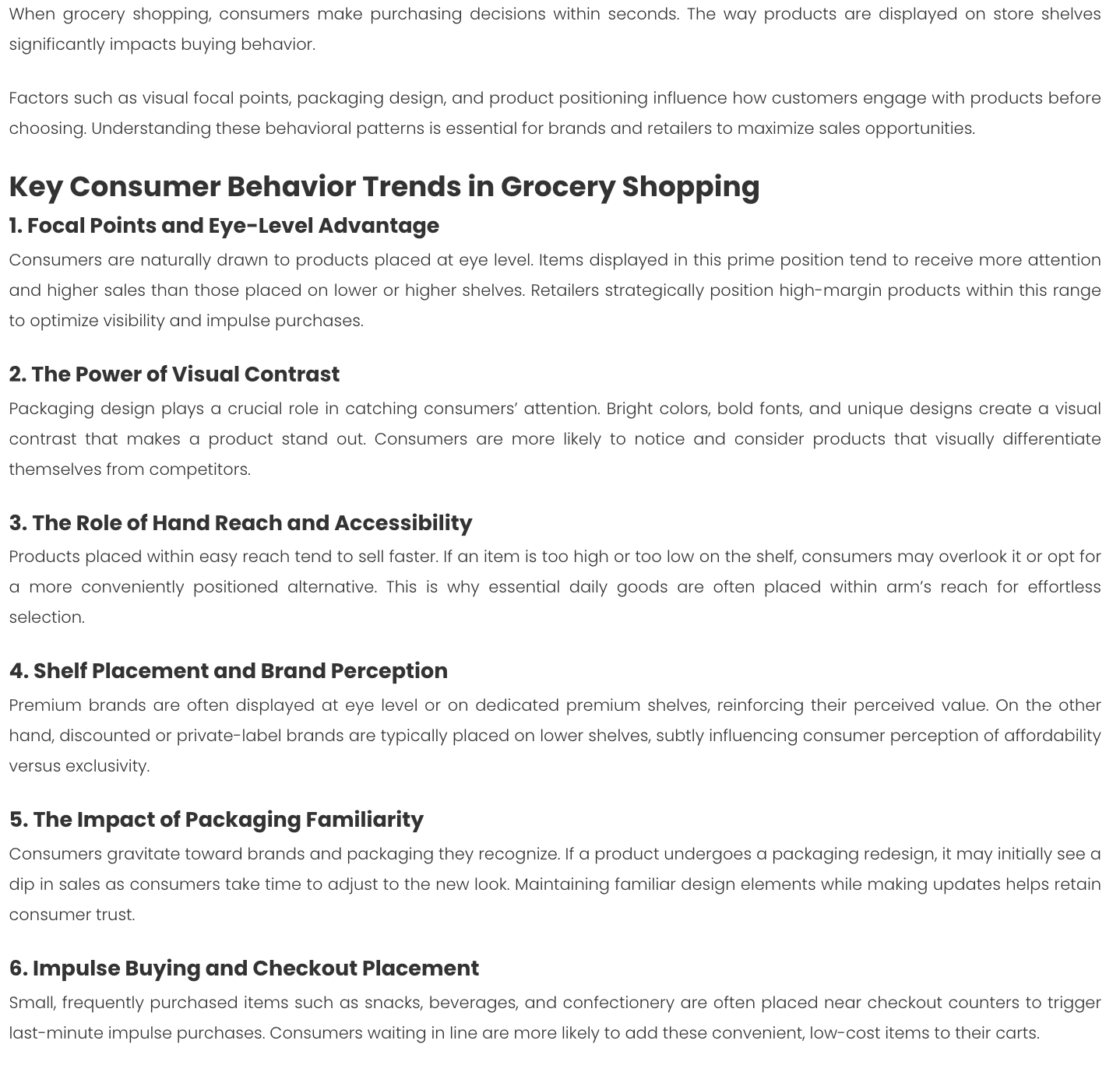
https://info.populix.co/articles/how-shelf-positioning-shapes-consumer-choices-in-grocery-shopping/

https://dobetter.esade.edu/en/vices-vs-virtues-store-shelf
-Eye-Level Advantage: For exhibitions and galleries, positioning my ceramics at eye level can significantly enhance their visibility and engagement. This prime position ensures that viewers can easily see and appreciate the details of my work.
-Visual Focal Points: I can create visual focal points within my display by using contrasting colours, unique designs, and thoughtful arrangements. This might include my glaze or horizon line, creating a visually appealing focal point to form a cohesive and striking display.
-Accessibility: It's important to ensure that my ceramics are displayed at accessible heights. Avoiding the placement of pieces too high or too low can prevent viewers from engaging with them. Shelving units should be designed for easy viewing and interaction, considering different people's heights, including children.
-Interactive Elements: Incorporating interactive elements such as QR codes or informational plaques can provide additional context about my ceramics. This can enhance the viewer's experience by offering insights into the creative process, materials used, and the story behind each piece. Interactive elements can also facilitate deeper engagement and appreciation.
-Narrative and Journey: Using long shelving units can take viewers on a physical journey, reflecting my personal journey of moving away. Walking along the shelf allows viewers to see all my vessels in detail, enabling them to reflect on their own experiences and journeys. This setup creates a narrative that connects my story with the audience's reflections.
By considering these points when thinking about display, I believe I will be able to decide on an effective way to showcase my work. Each element is crucial and requires reflection to elevate my ceramics through thoughtful display. By integrating these considerations, I can create a display that not only showcases my ceramics effectively but also elevates the viewer's experience, making it more engaging, informative, and reflective.
Galleries
At first, I didn't think about displaying my work in a gallery. But as my project has developed, and talking more with CJ, I've realised that my work has massively shifted in a positive direction. Although this wasn't the direction I was thinking of, as I've always seen my work being represented in smaller shows like the Great Northern Contemporary Fair, I think my work has gone beyond this. The collection of my work, professional finish, details, and pricing fit well with the professional environment of a gallery. This has changed my perspective, and now I see a gallery as the best place to showcase and share my work with more people.
-Visibility and Exposure: A reputable gallery can significantly increase the visibility of my work, attracting a wider audience and potential buyers who appreciate and value ceramics.
-Professional Presentation: Galleries have the expertise to present my work in the best possible light, using professional display techniques that enhance the aesthetic appeal and narrative of my pieces.
-Networking Opportunities: Being part of a gallery can connect me with other artists, collectors, and industry professionals, fostering valuable relationships and collaborations that can further my career.
Kellie Miller Arts Gallery
Located in Brighton Lanes, this artist-owned gallery showcases a diverse selection of art, including ceramics. The gallery features local, national, and international artists, making it an ideal space for my vibrant and engaging collection
Contemporary Ceramics Centre
Located opposite the British Museum, this gallery displays the work of over 80 ceramic artists. It regularly features new exhibitions by leading makers, providing a dynamic and professional environment for my collection
Galleries At Collect
Thrown Gallery focuses specifically on ceramics, this specialisation can help elevate my work and make sure it reaches an audience that is particularly interested in ceramics. Thrown Gallery also represents both emerging and established artists. This could be a great opportunity to gain exposure and build my reputation within the ceramics community
When visiting Collect, I really liked the curation of their artists. I think having this can provide a platform for my work to be seen alongside other innovative and high-quality pieces, potentially increasing its visibility.
Contemporary Applied Arts is an interesting gallery because it specialises in showcasing the best British craft, including ceramics, textiles, glass, and metalwork. Their exhibitions are known for featuring playful and colourful ceramics, similar to my own work.
This makes it an interesting gallery as a beneficial platform for me, as it can help me reach an audience that appreciates vibrant and innovative designs.
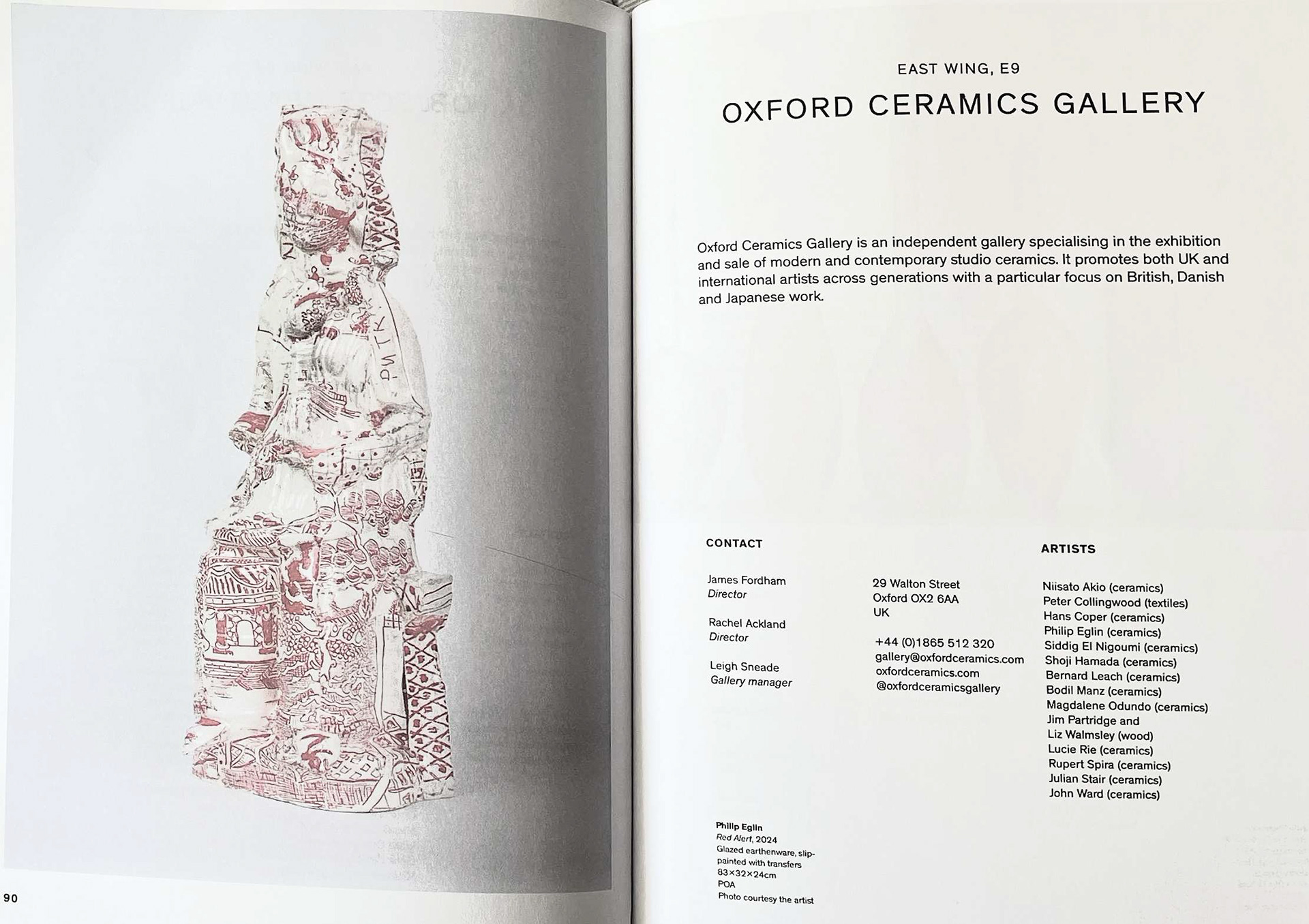
The gallery is known for its carefully curated exhibitions featuring both established and emerging artists, making it an excellent platform for showcasing my ceramics. By exhibiting at Oxford Ceramics Gallery, which only represents studio ceramics, I can benefit from increased visibility, engagement with a community of ceramics enthusiasts, and the opportunity to be part of a vibrant and dynamic art scene
Artist Open House- Brighton
The Artists Open Houses event in Brighton is a vibrant and unique festival that takes place annually, typically during the weekends in May. This event allows artists to open their homes and studios to the public, providing a personal and intimate setting for showcasing their work. a festival allowing you to sell your craft whilst celebrating and supporting your local creative community

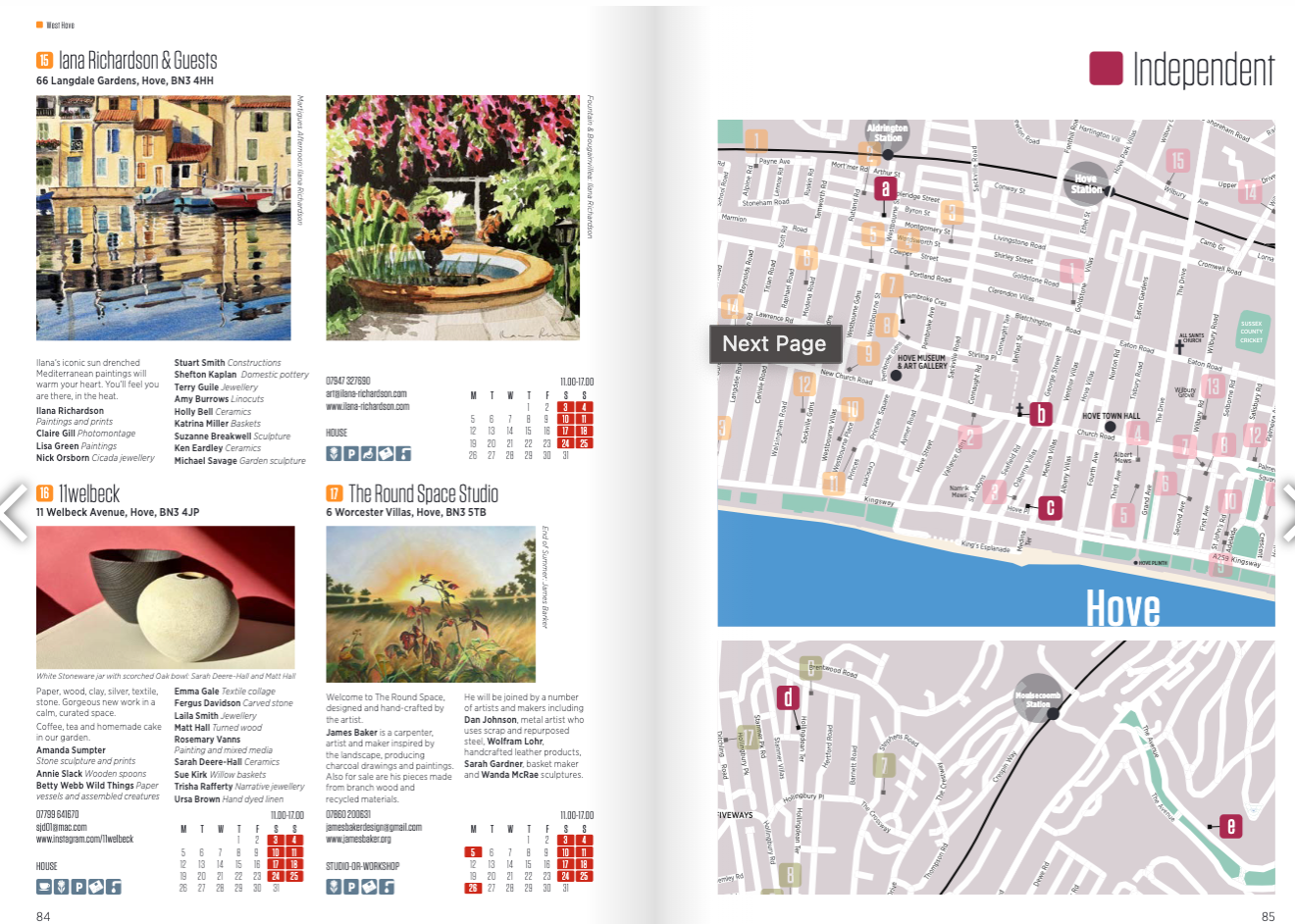
Although the submission is closed for this year, I think the Brighton Artists Open House event is something I will look into in the future. It would be an excellent opportunity for me to showcase my collection of 30 vessels. This event allows me to present my work in a personal and intimate setting, directly engaging with visitors and potential buyers. It provides a platform to share the stories and inspirations behind my ceramics, enhancing the viewer's experience and connection to my art. Additionally, participating in such a well-regarded event can increase my visibility within the art community, attract new audiences, and potentially lead to sales and networking opportunities with other artists and collectors.
Reflection Of Research
Throughout my project, I explored various aspects that influenced my making and the concepts behind my work. My research was extensive and multifaceted, focusing on artists who use ceramics to tell stories, employ bold and repetitive patterns, incorporate tactile elements, and understand the impact of a collection. These artists inspired different elements within my work, allowing me to reflect on what I wanted my final outcome to be.
Weekly tutorials were crucial to my project, providing opportunities to discuss and explore ideas. Group tutorials were particularly helpful, as they facilitated discussions with my peers, enabling me to consider and investigate elements I might not have thought of independently. These enriched my understanding and broadened my perspective, contributing significantly to the development of my work.
I made an effort to research various elements that would inform my practice. This included studying the techniques and philosophies of artists like Edmund de Waal, Grayson Perry, and Jennifer Lee, who use ceramics to convey narratives and evoke emotional responses. Their approaches to storytelling through ceramics, the use of patterns, and the tactile quality of their work deeply influenced my own practice.